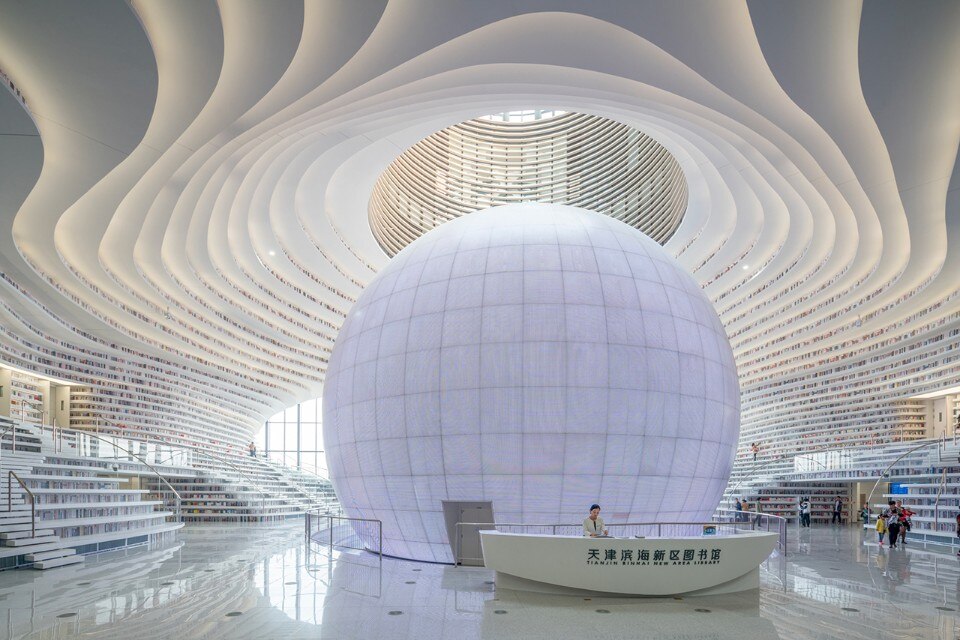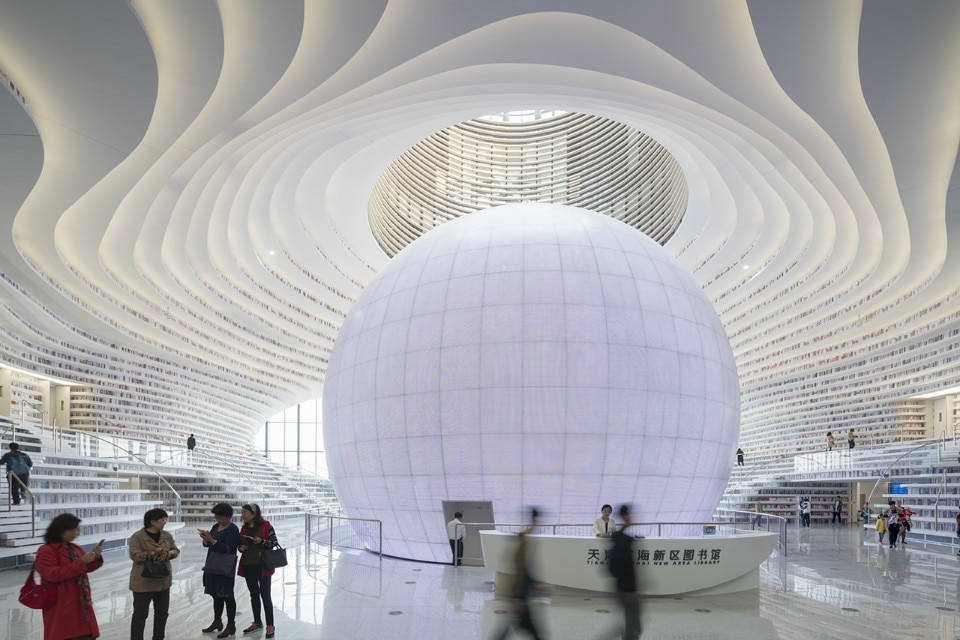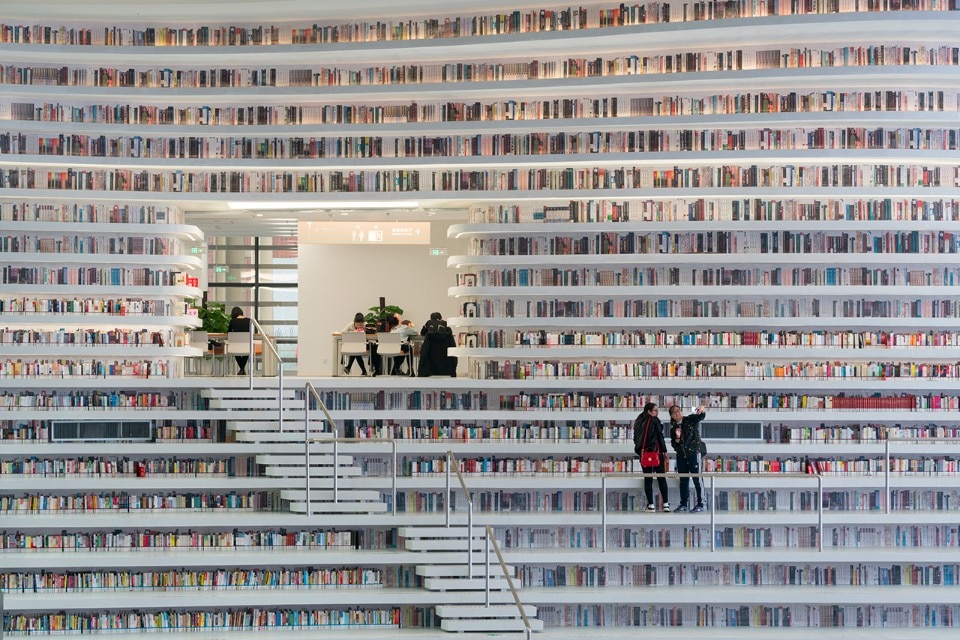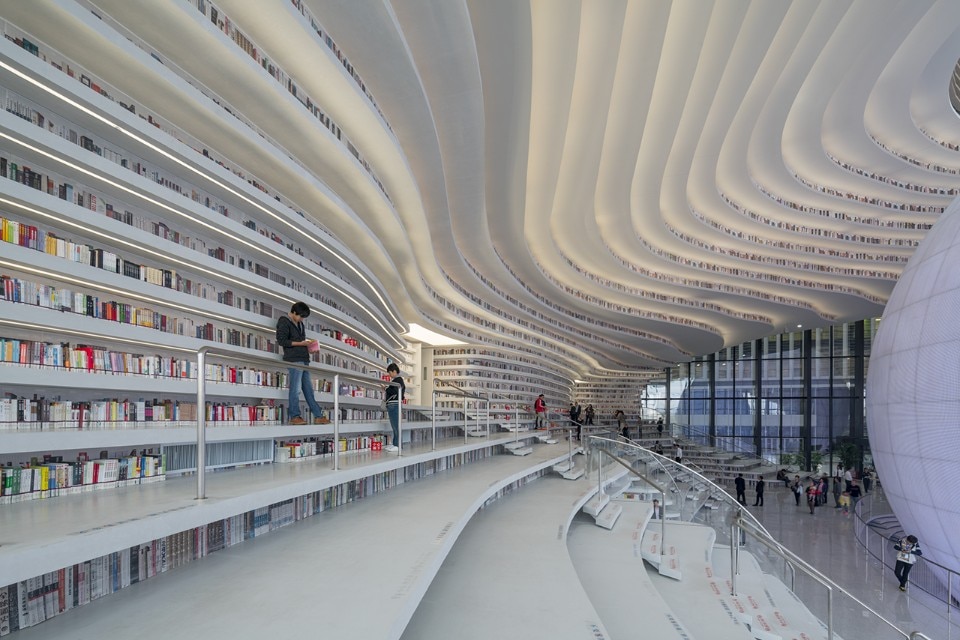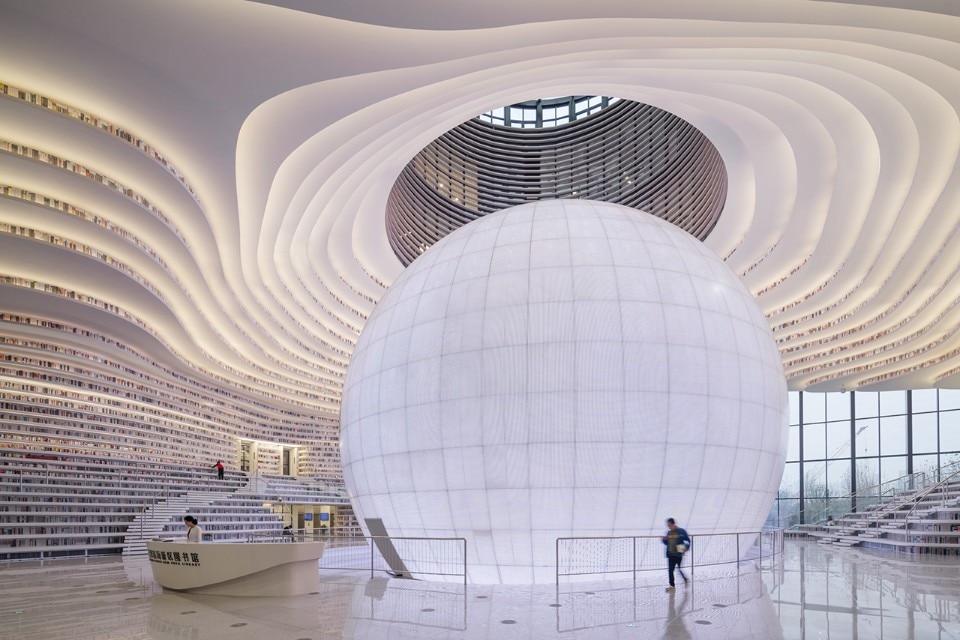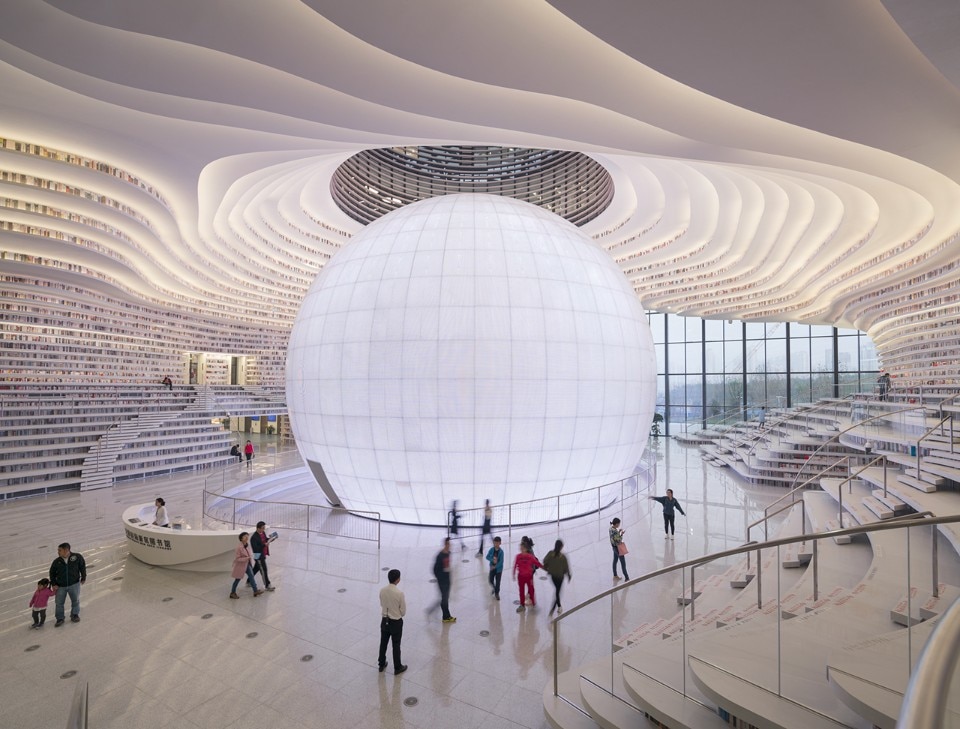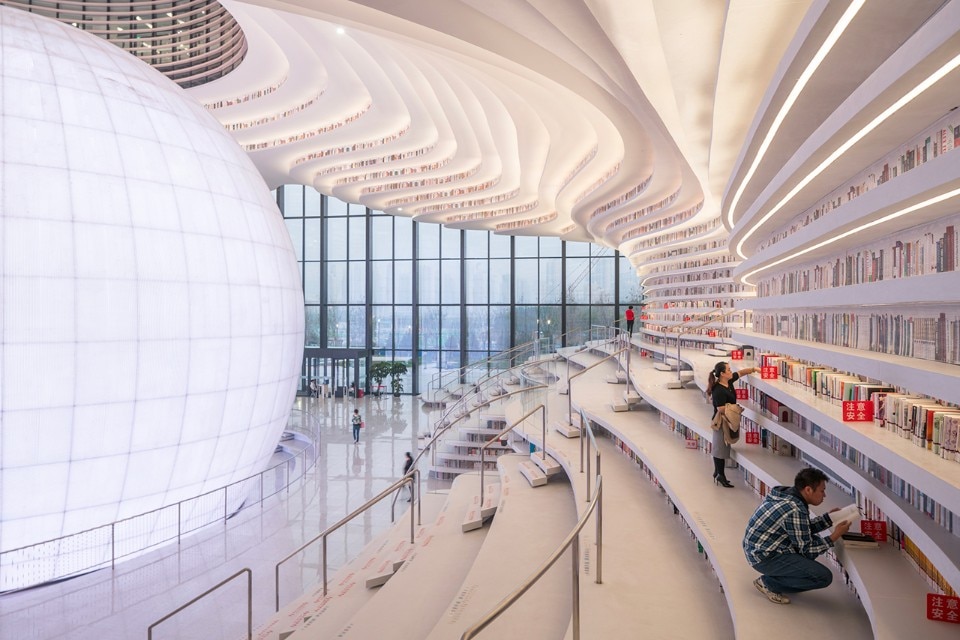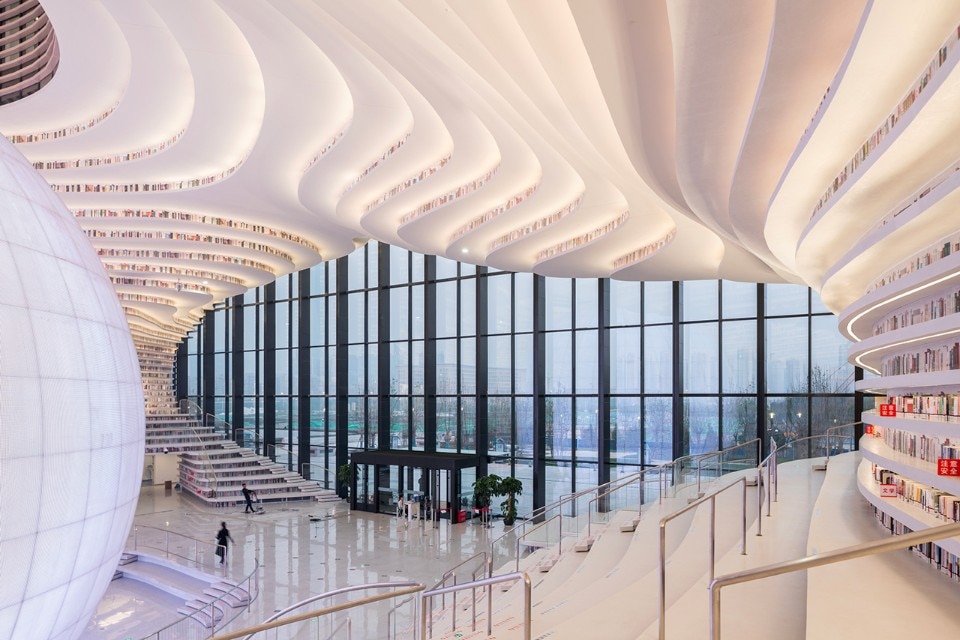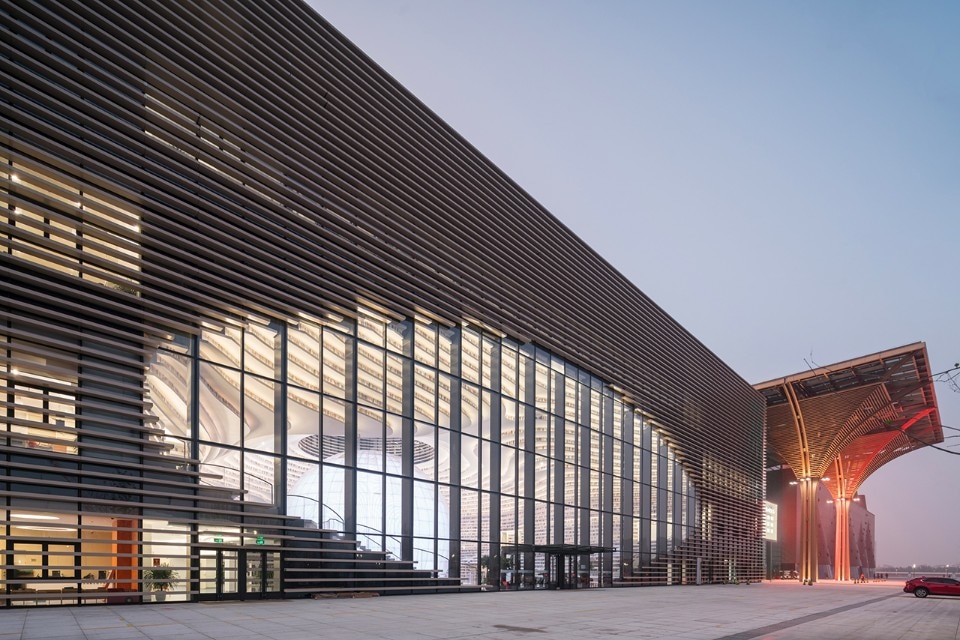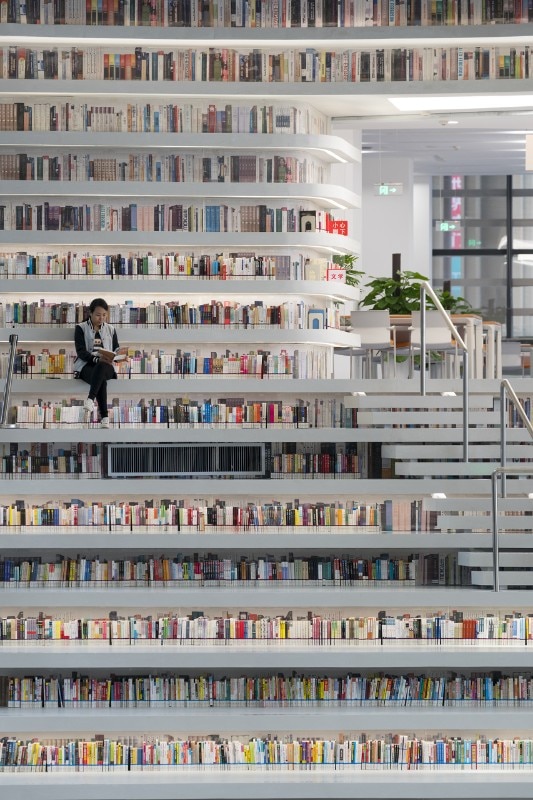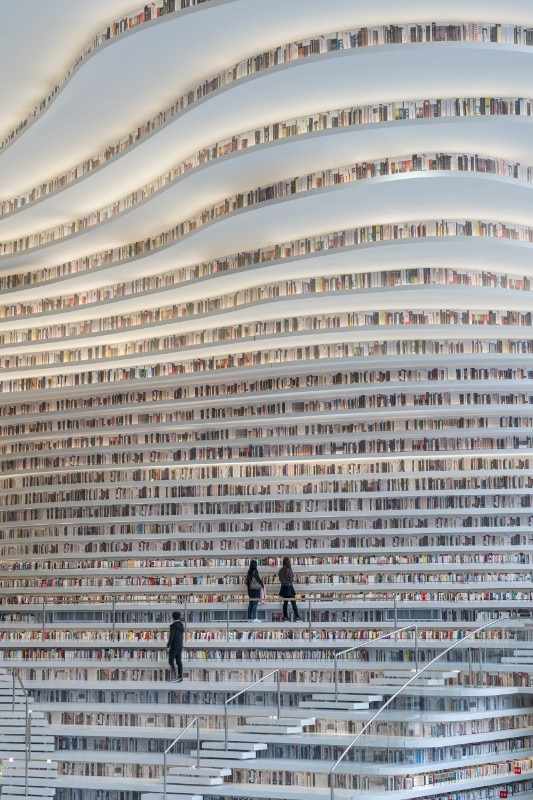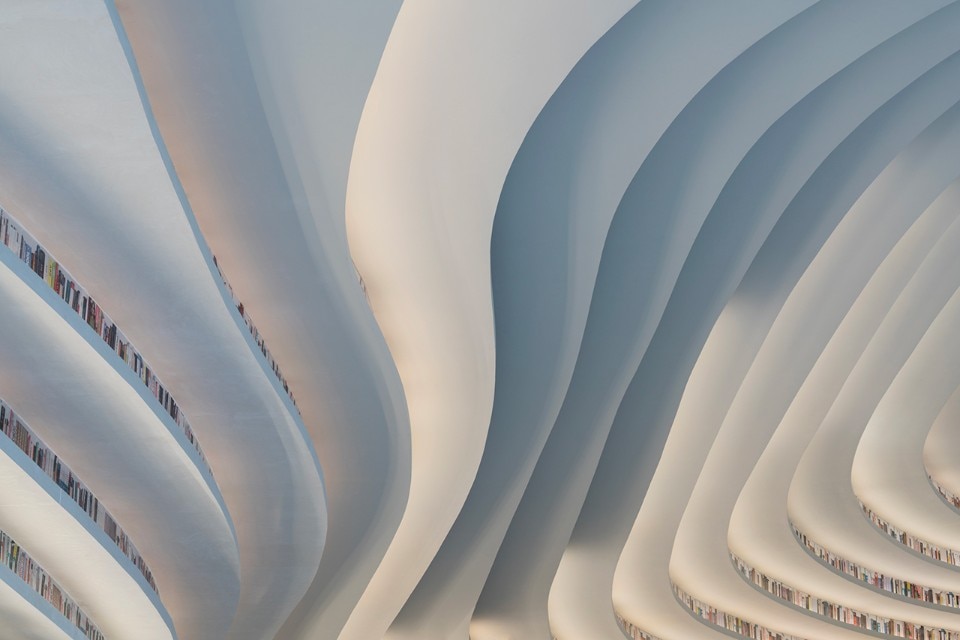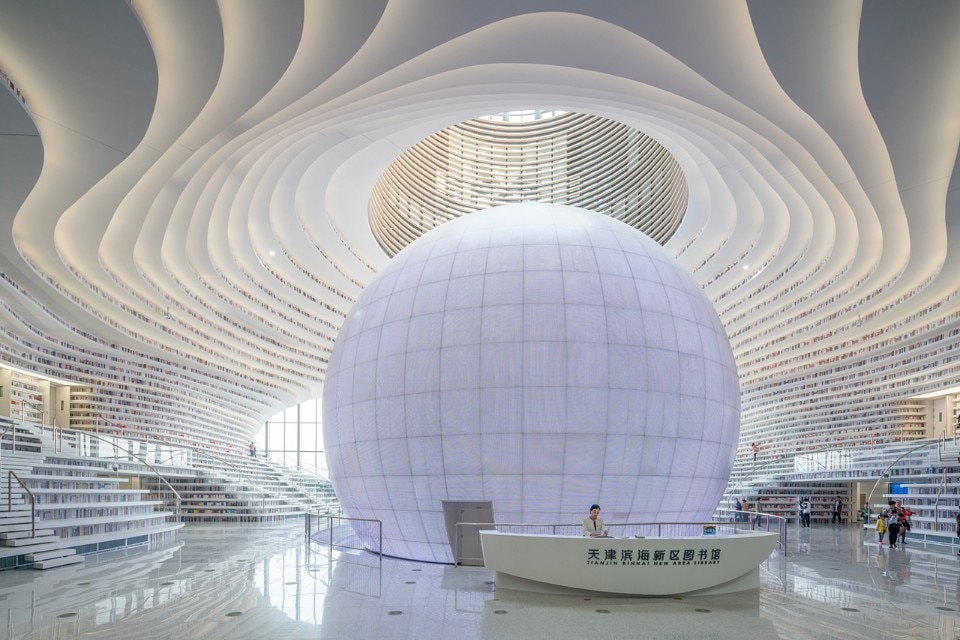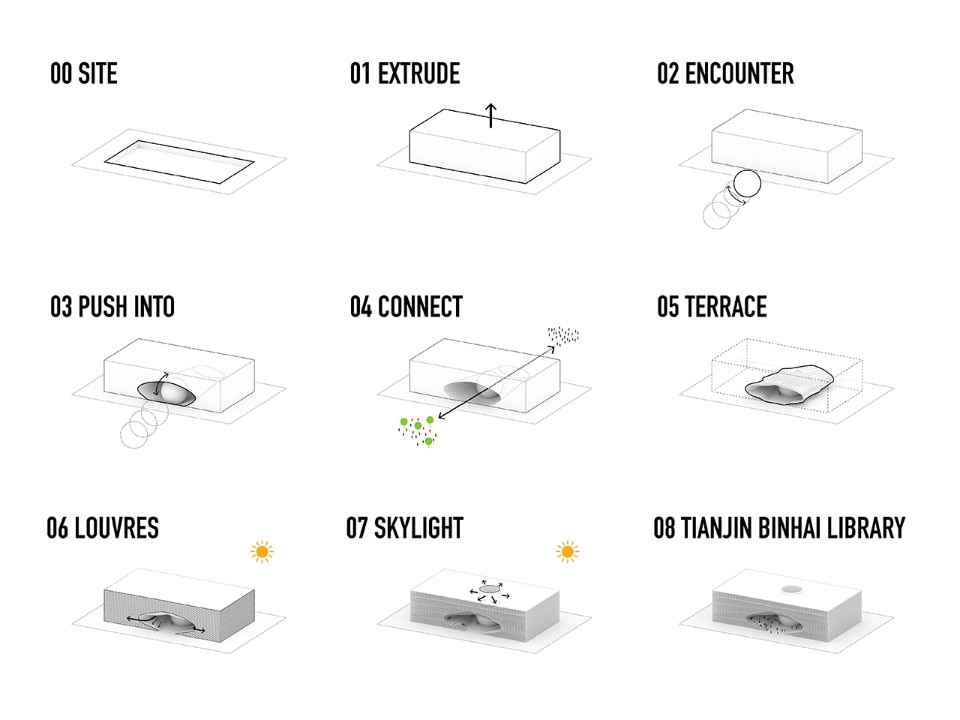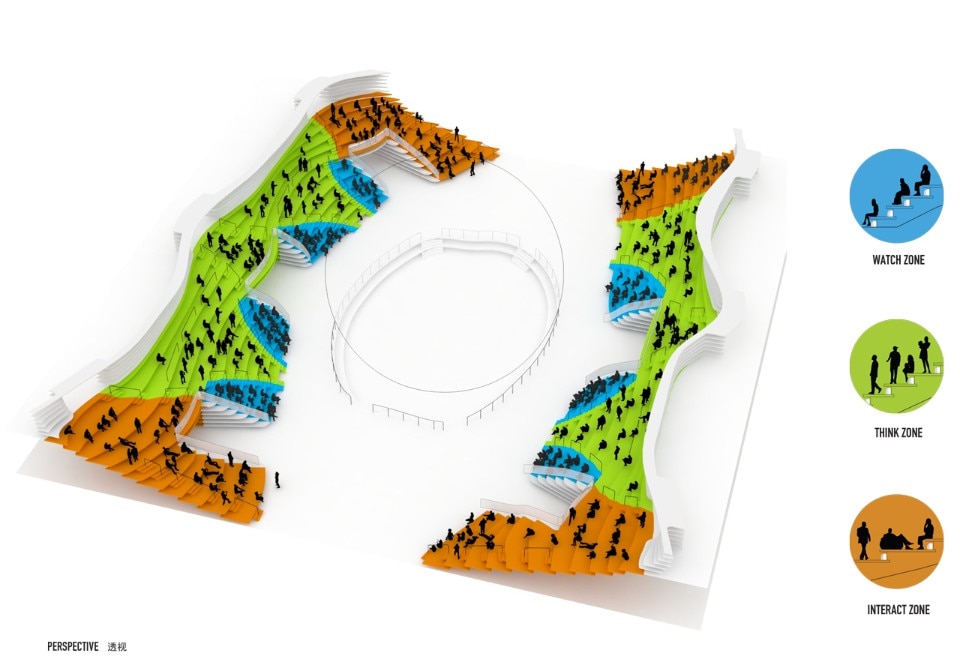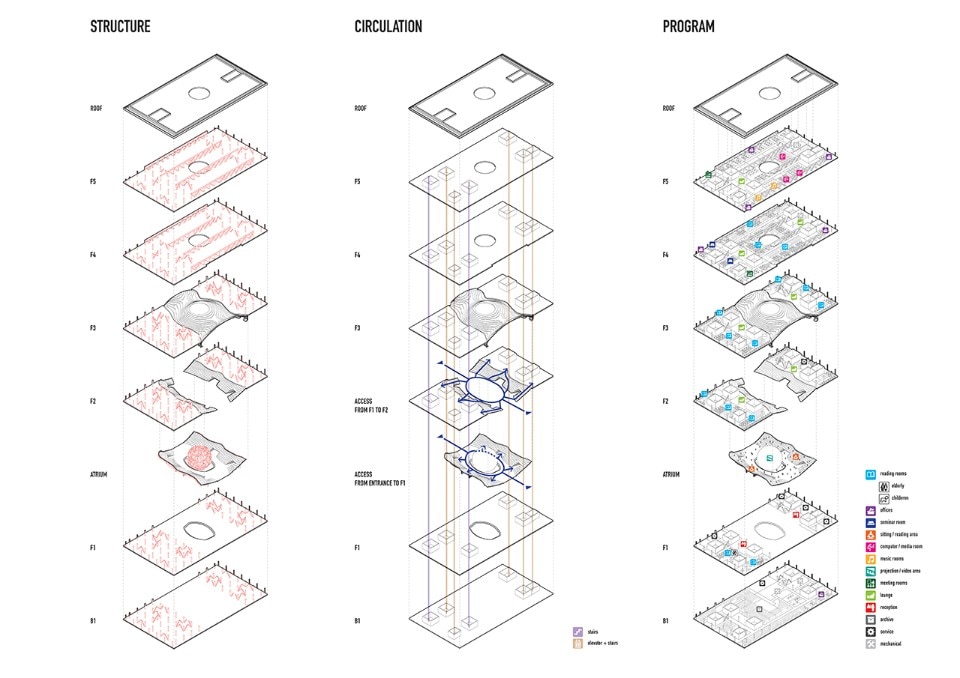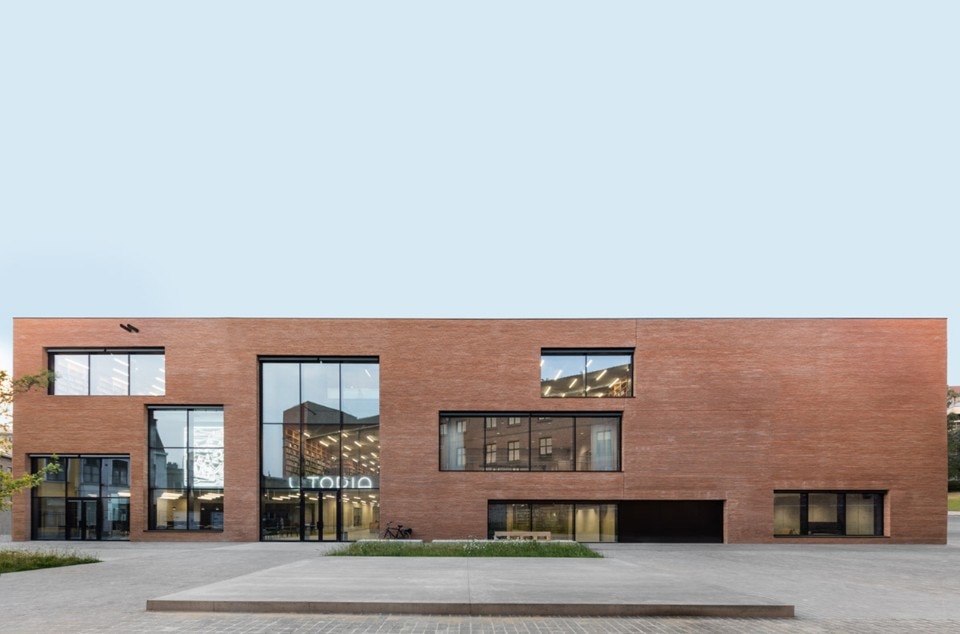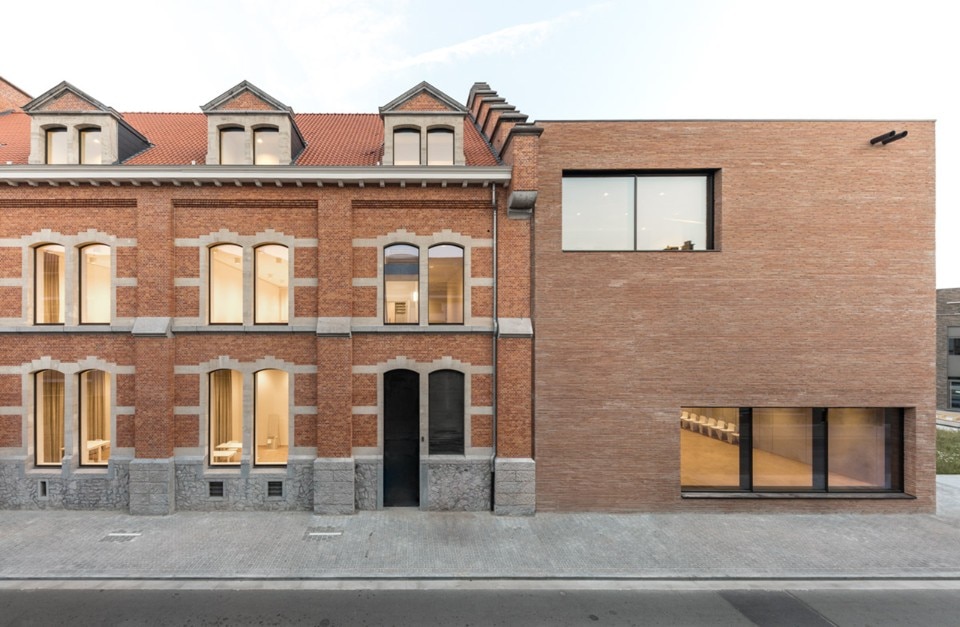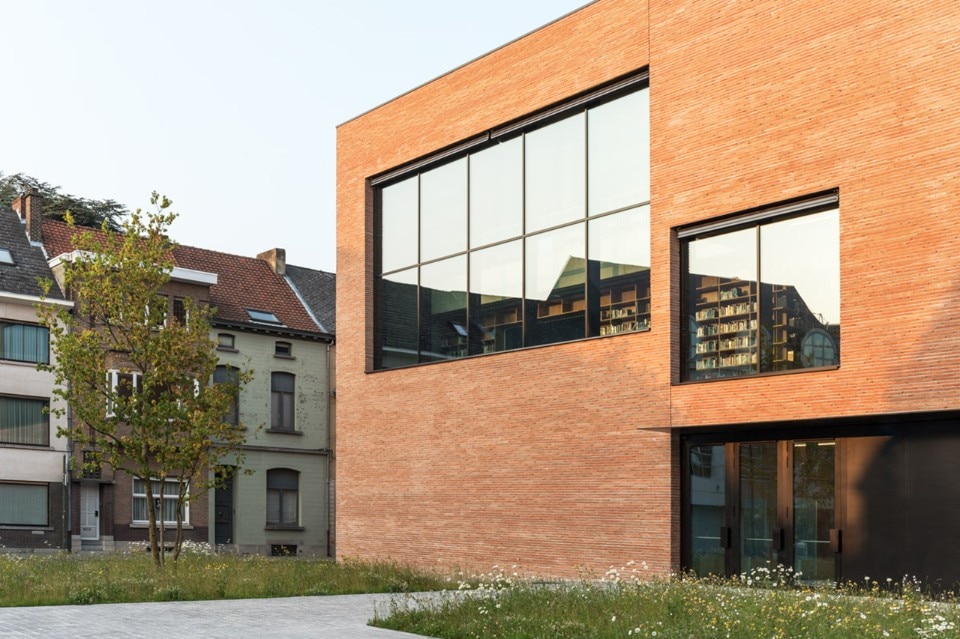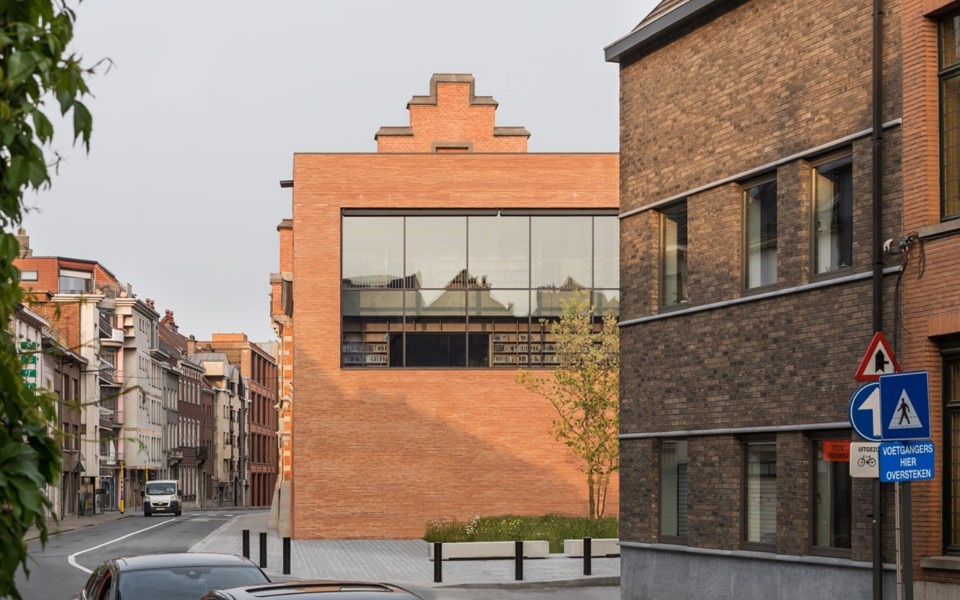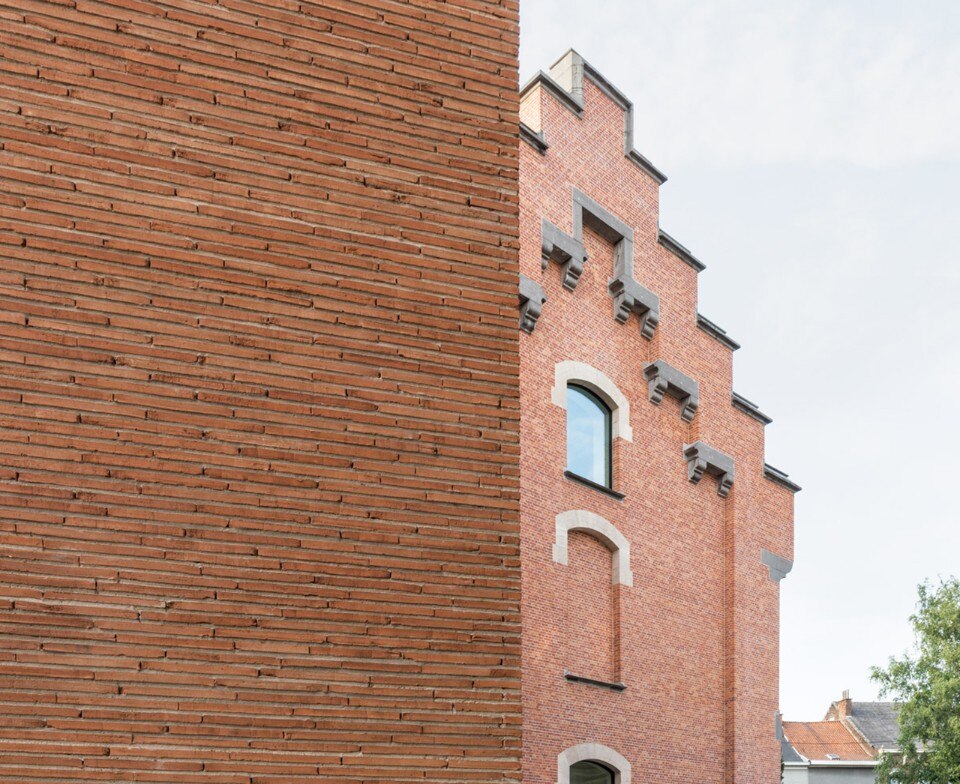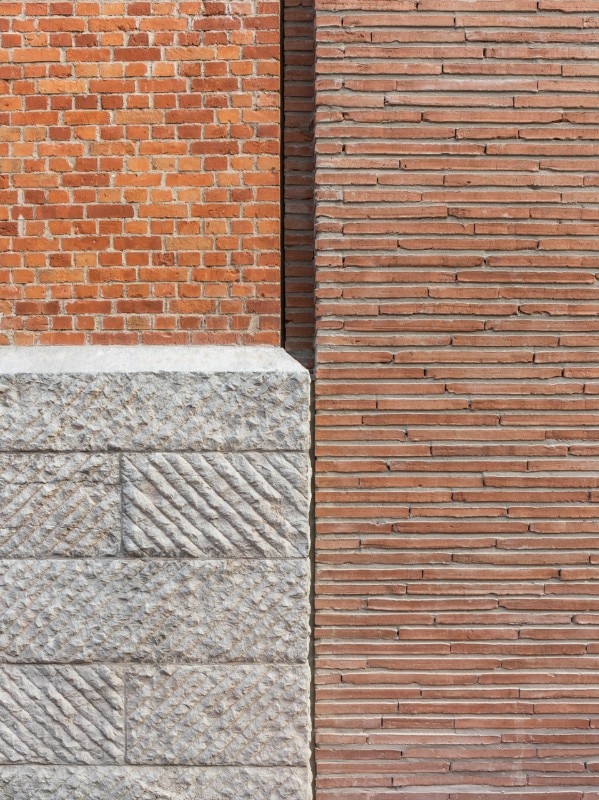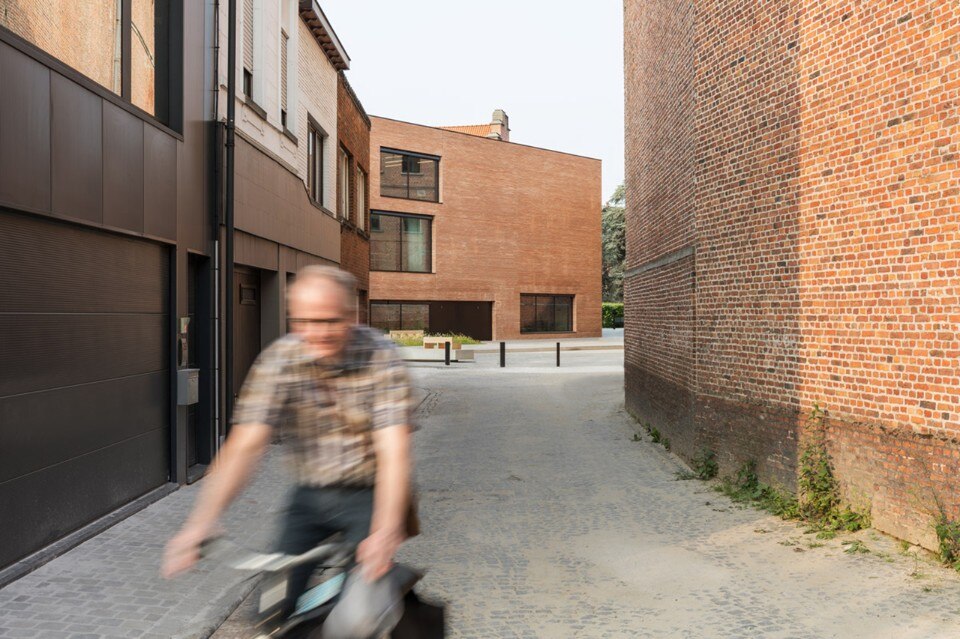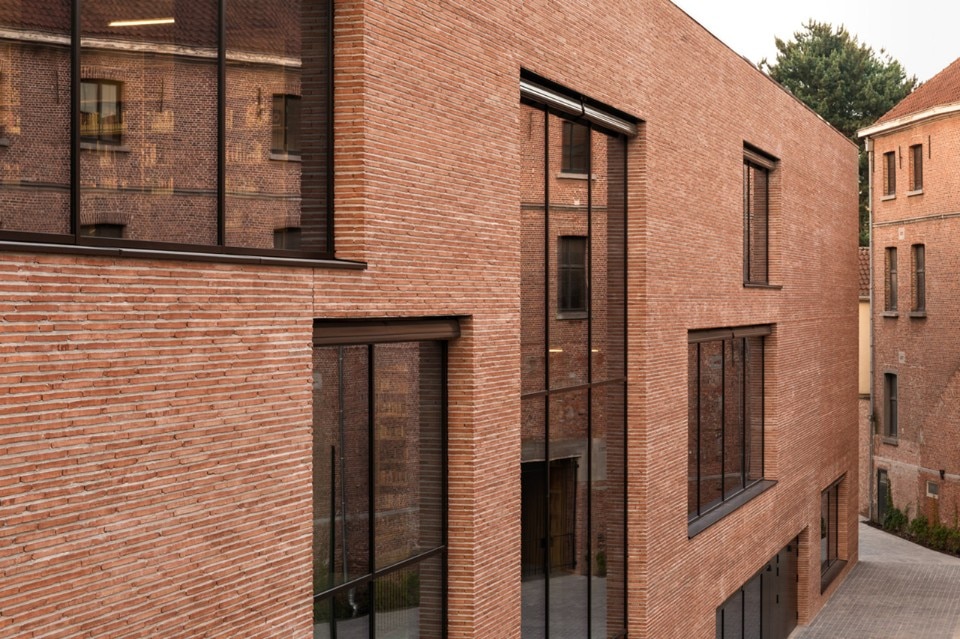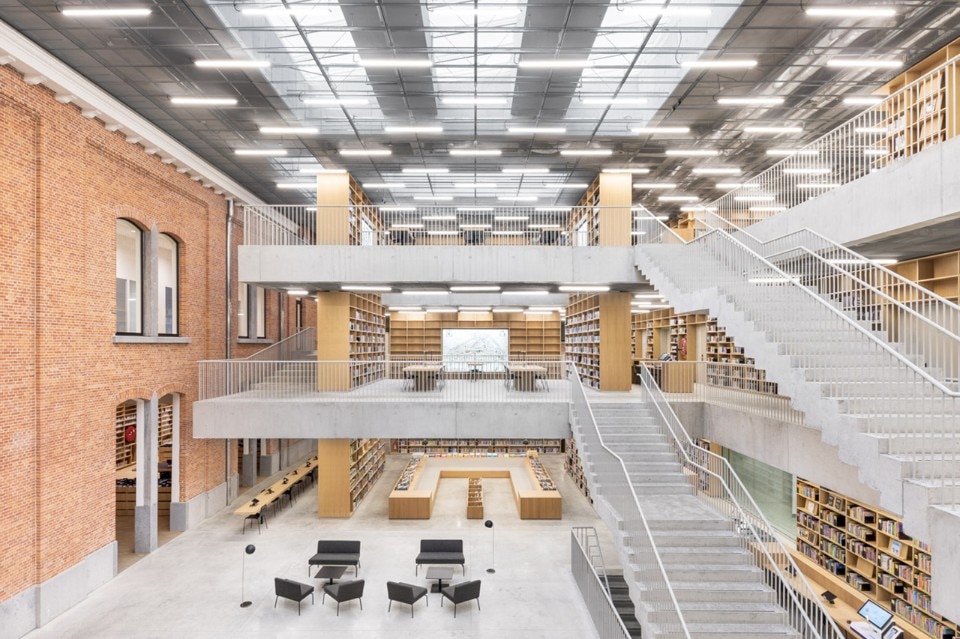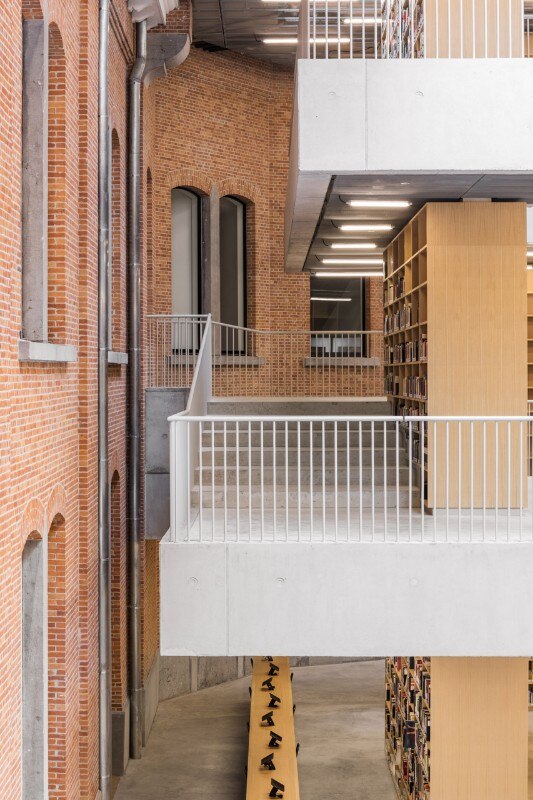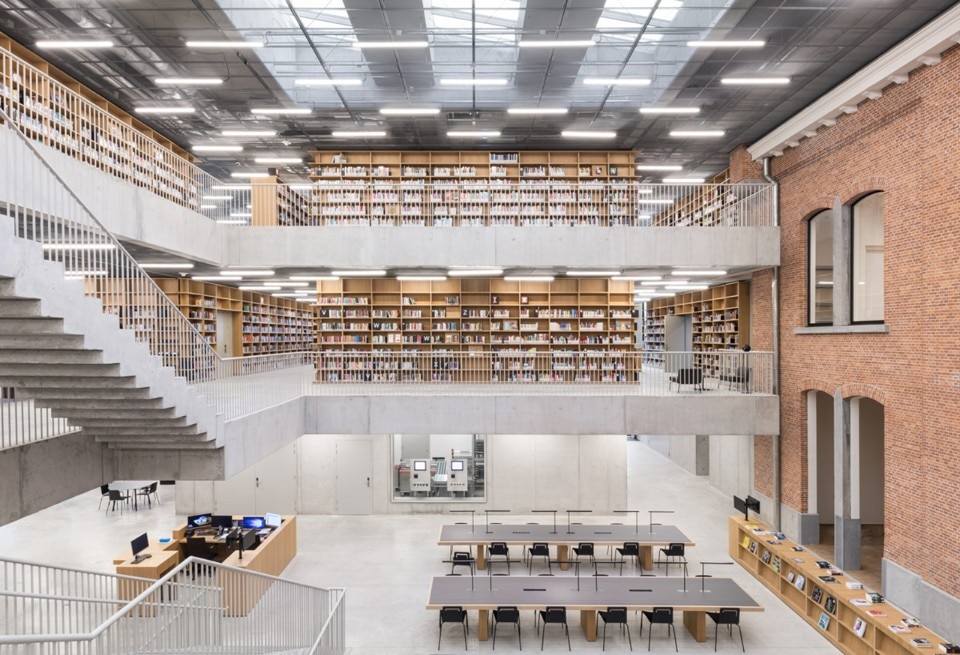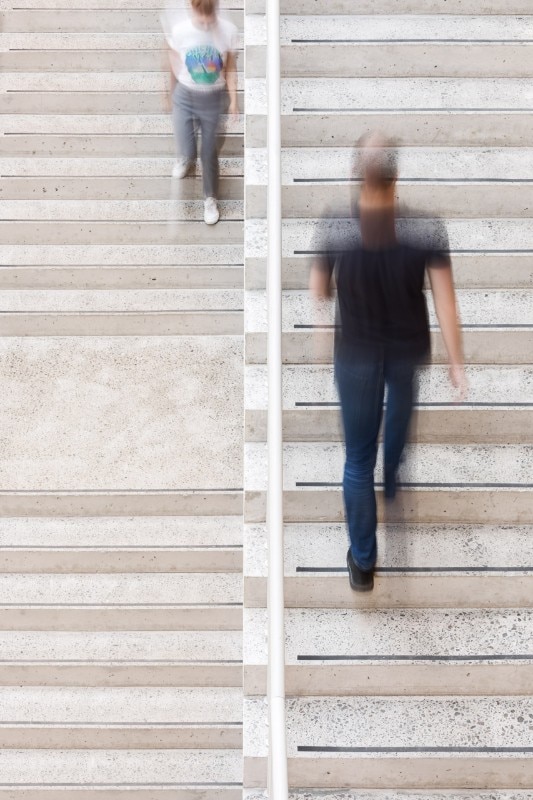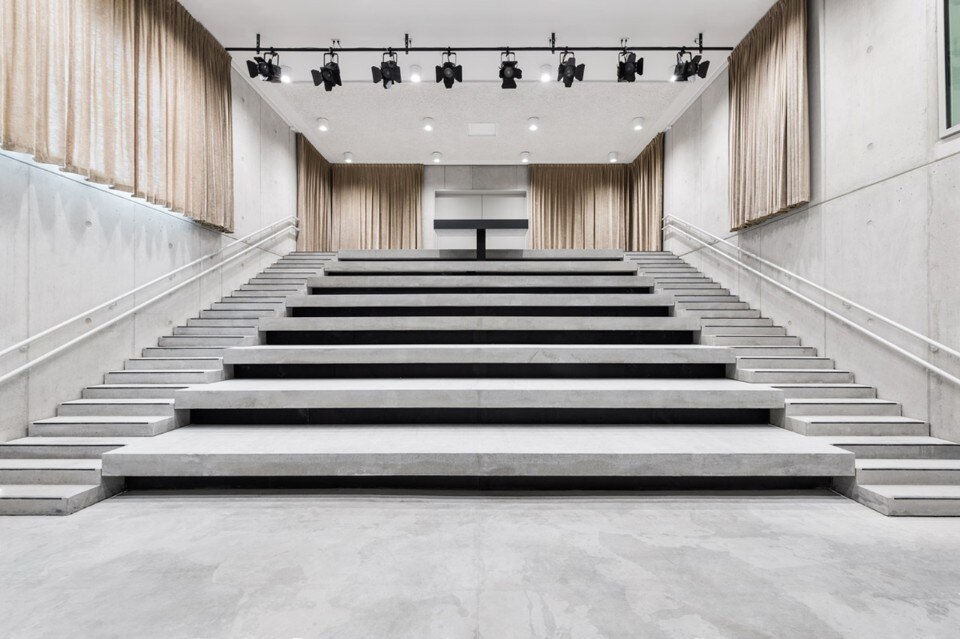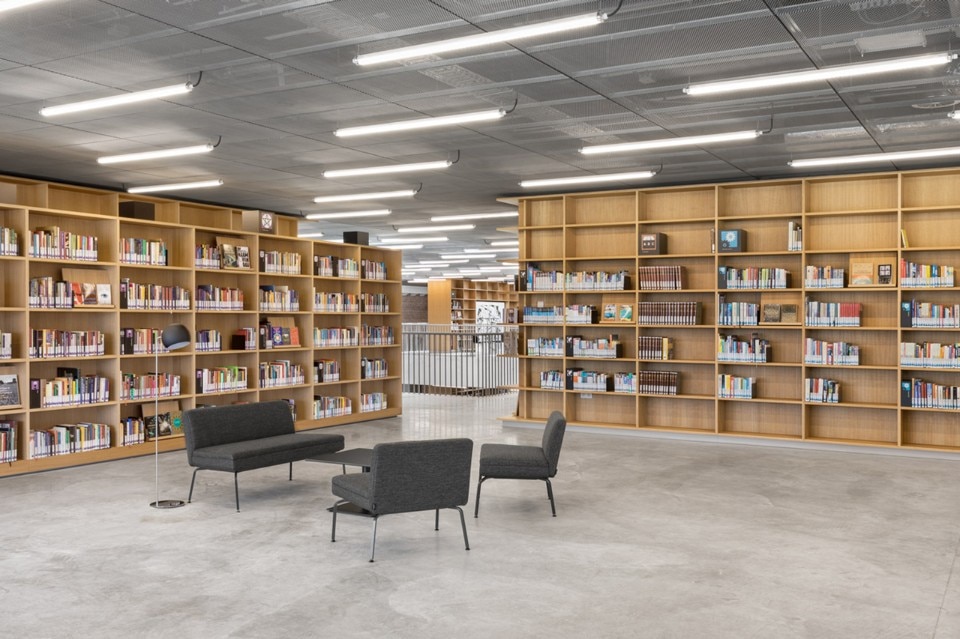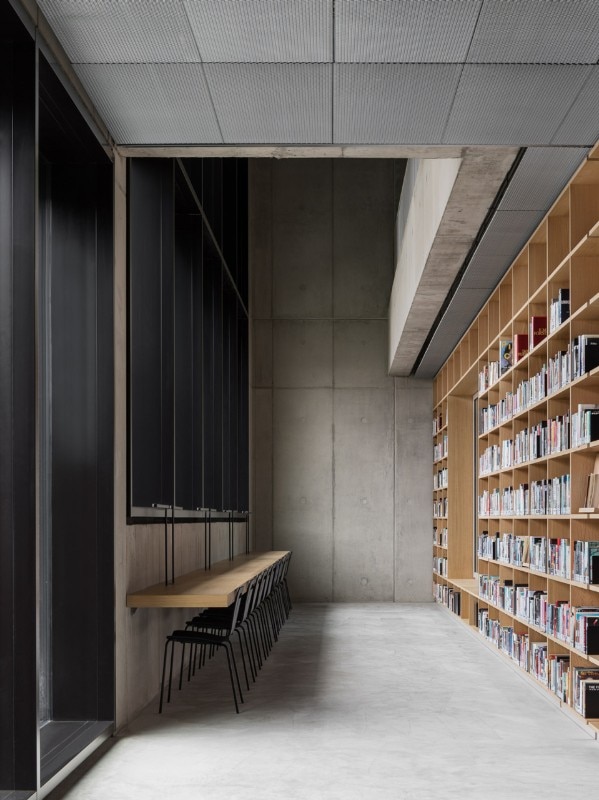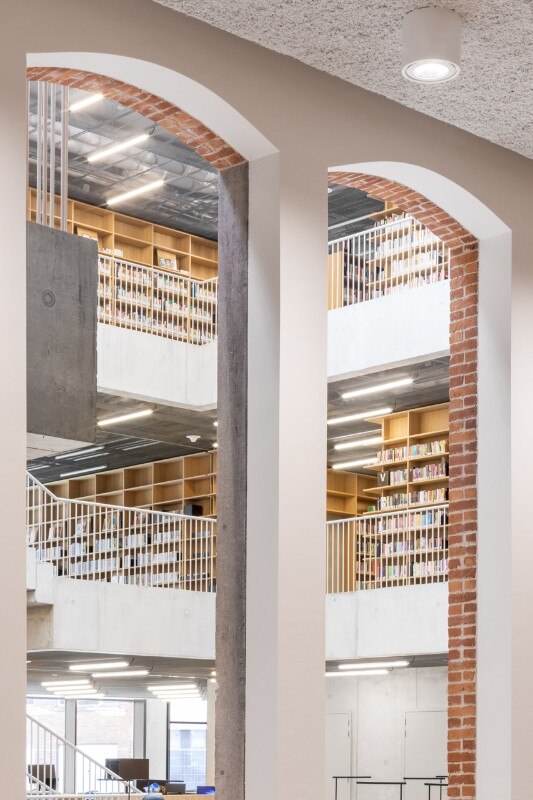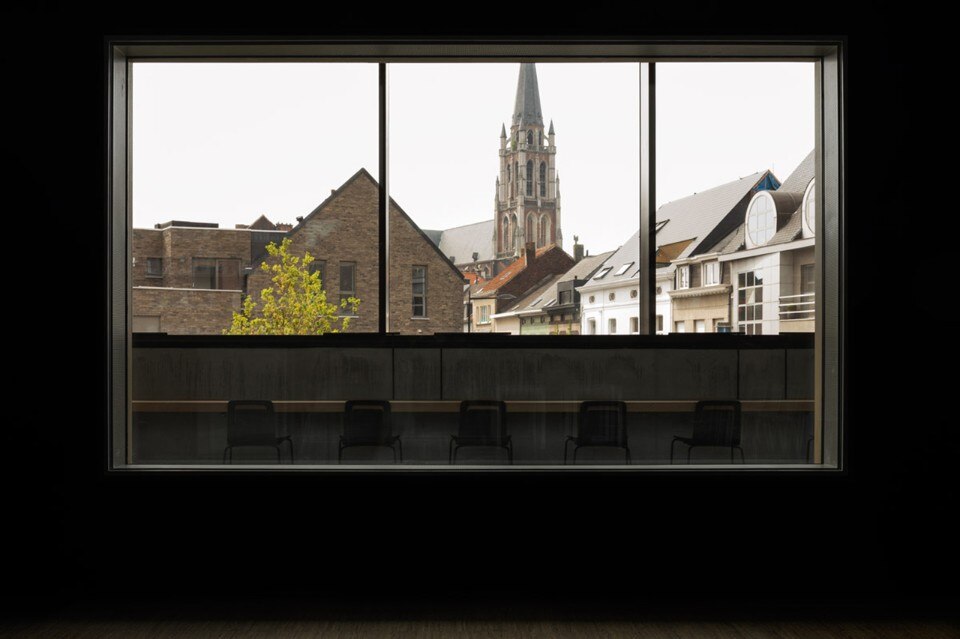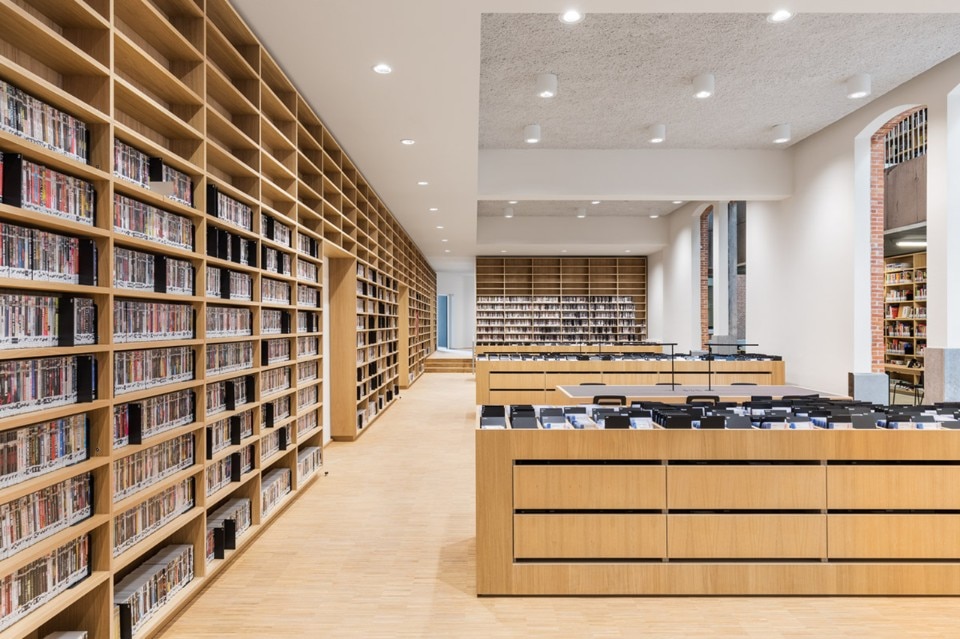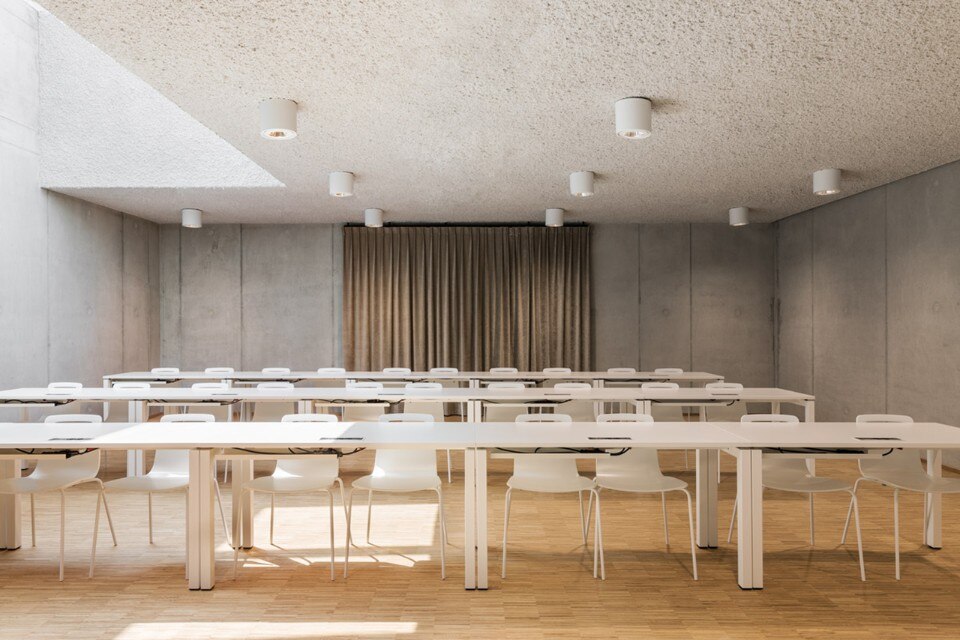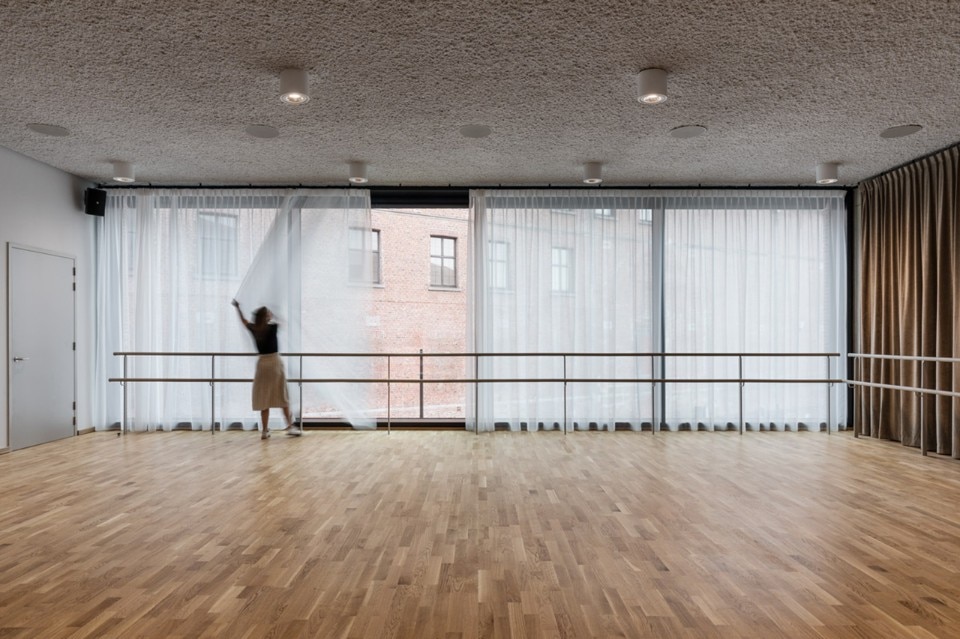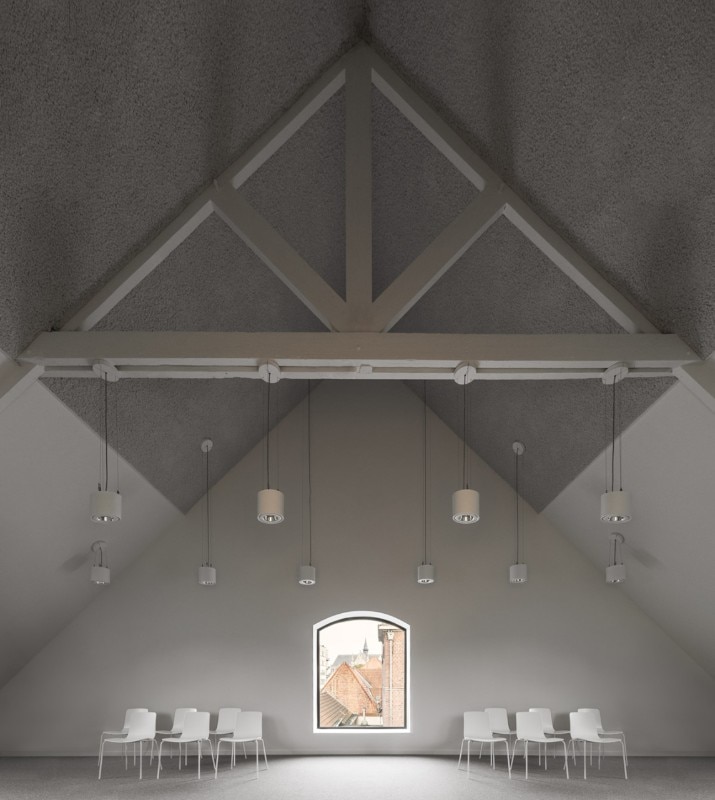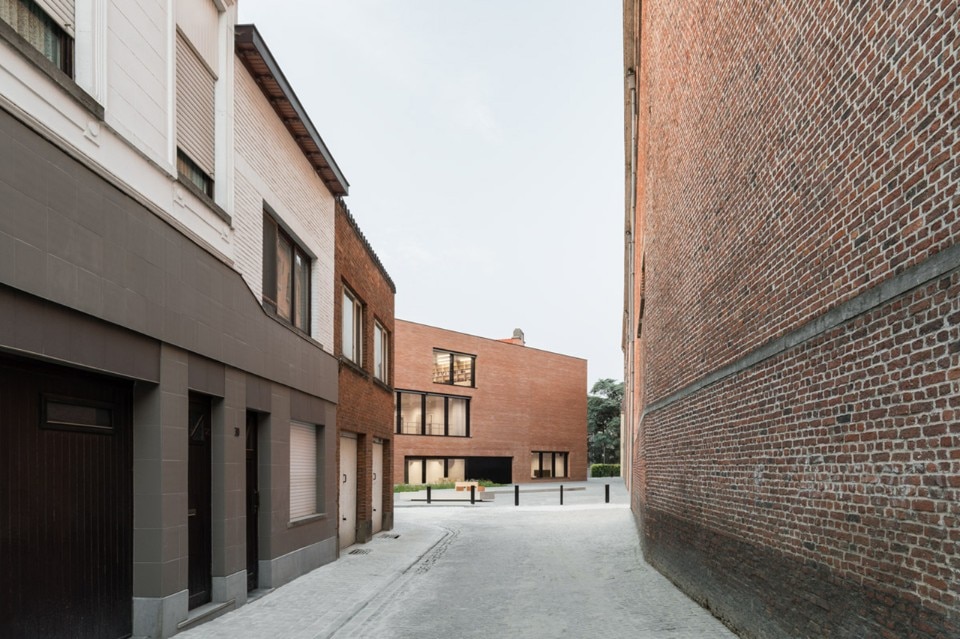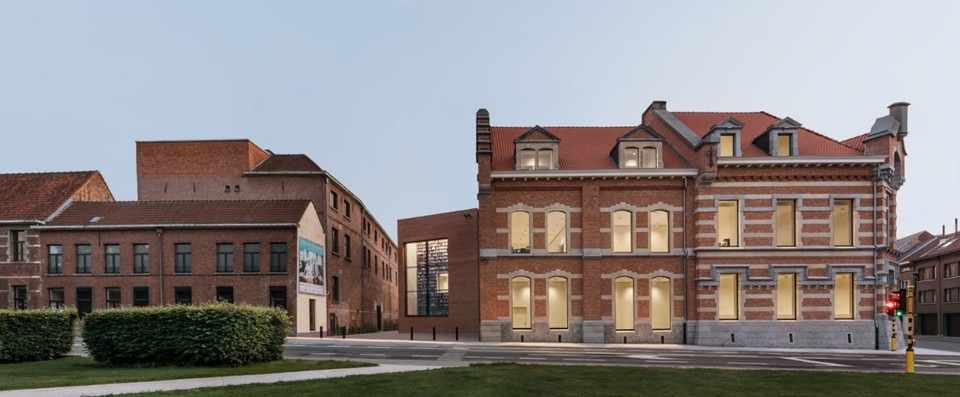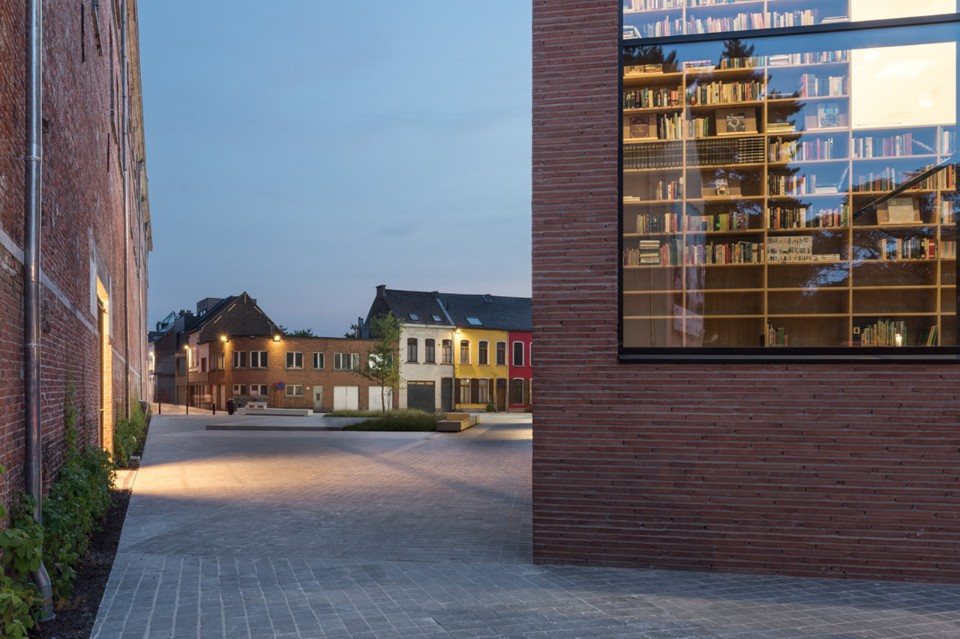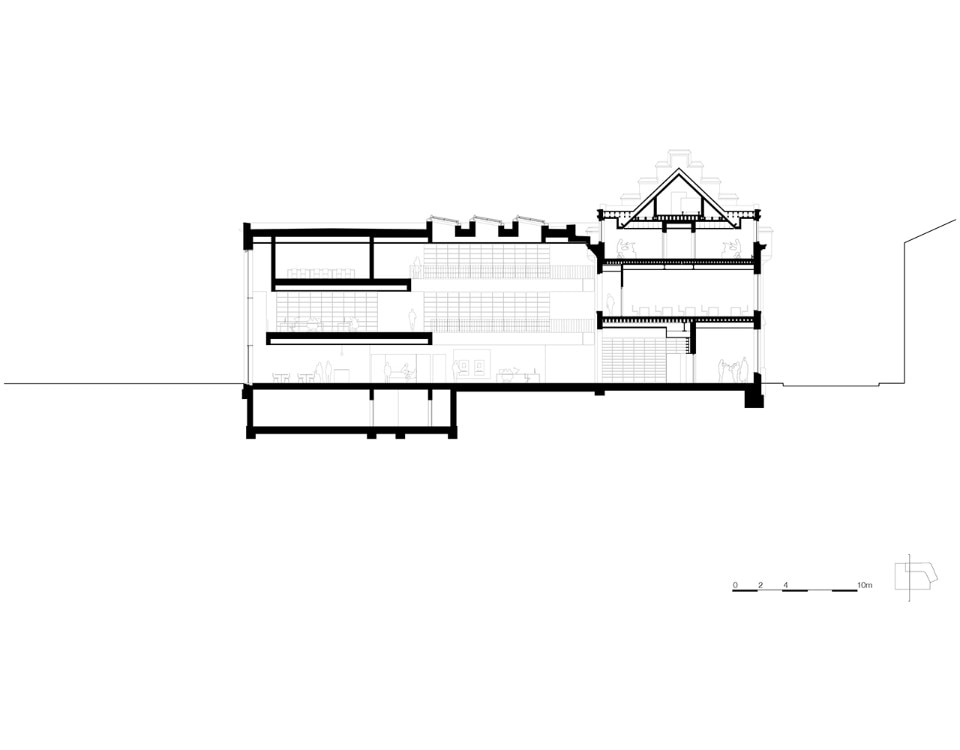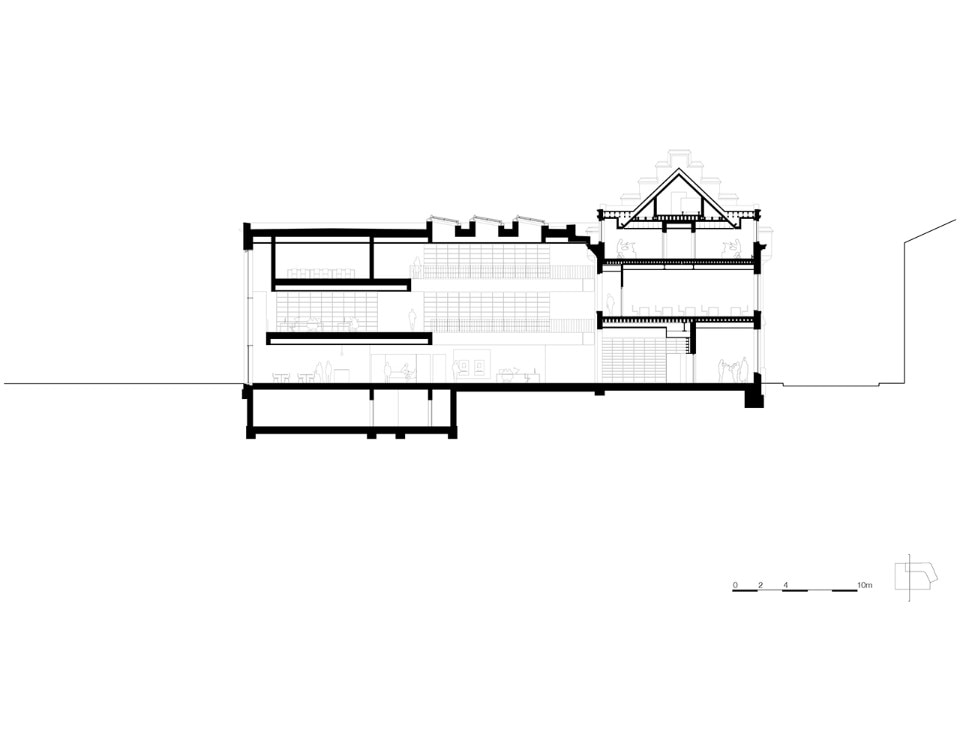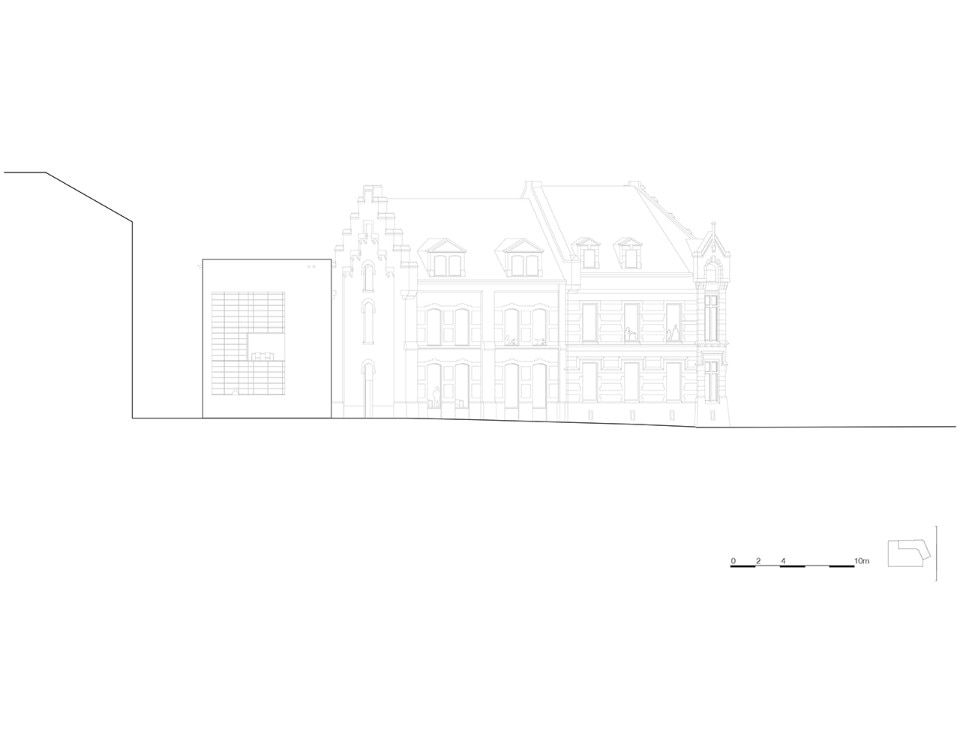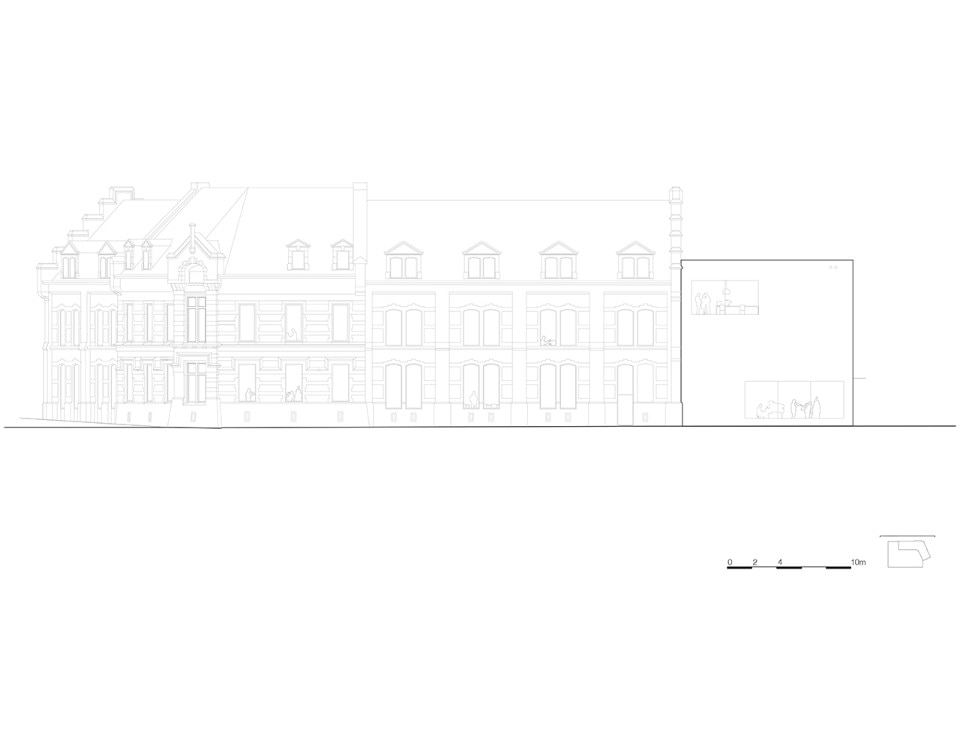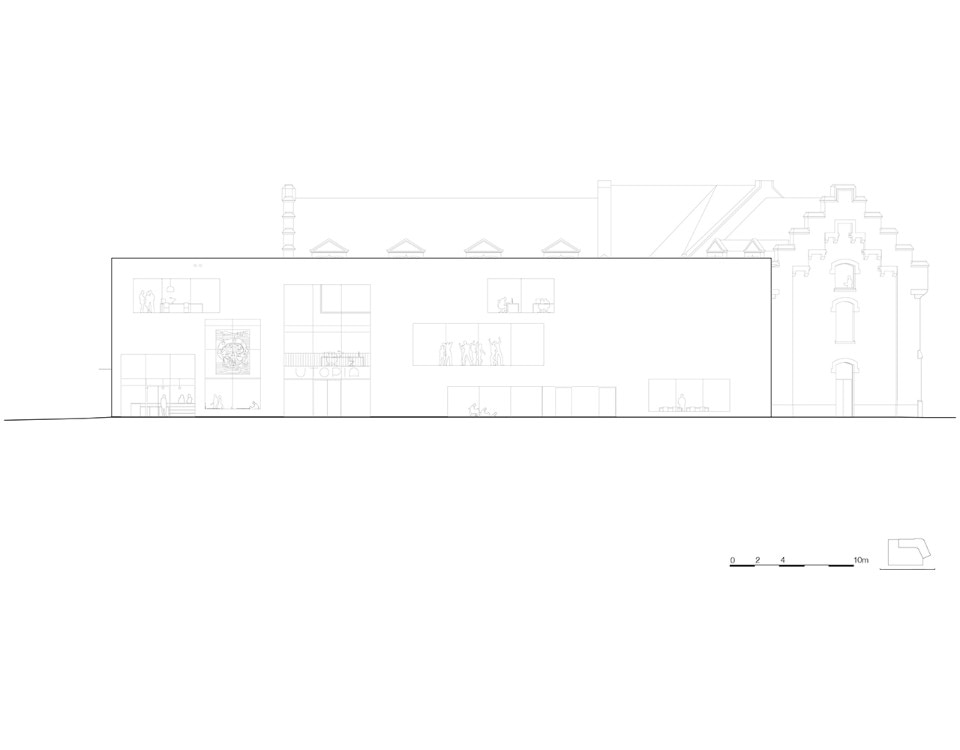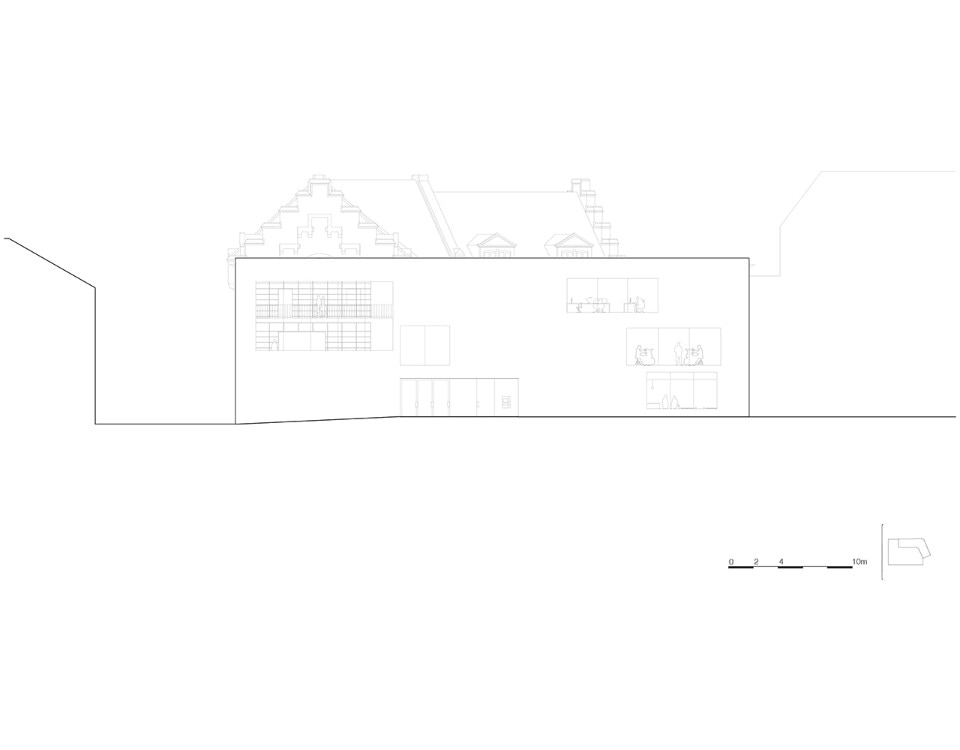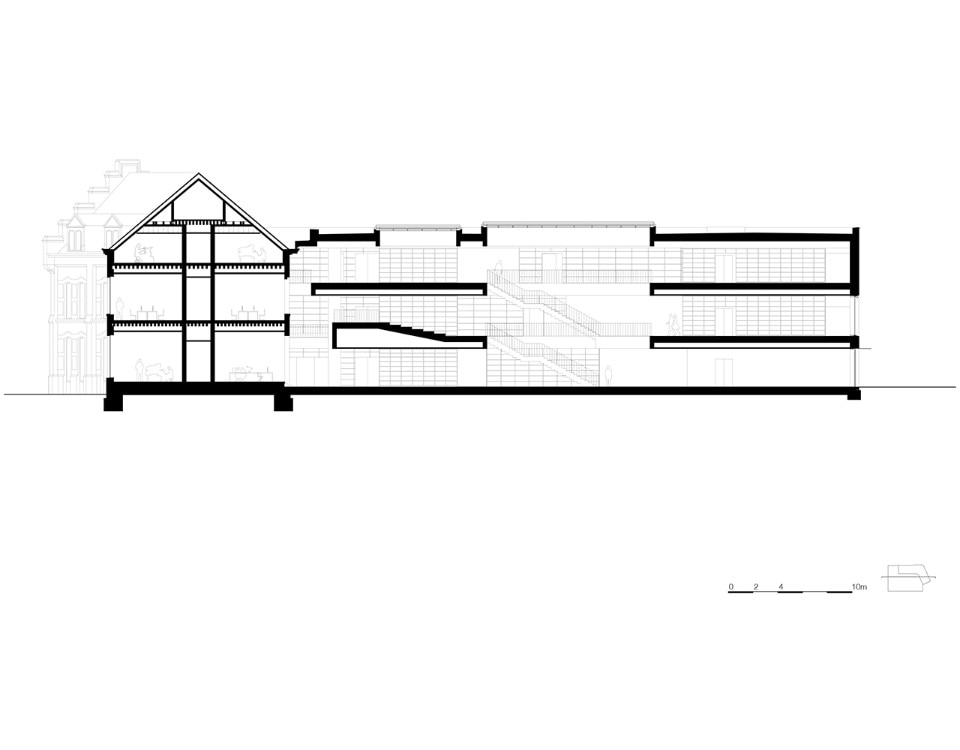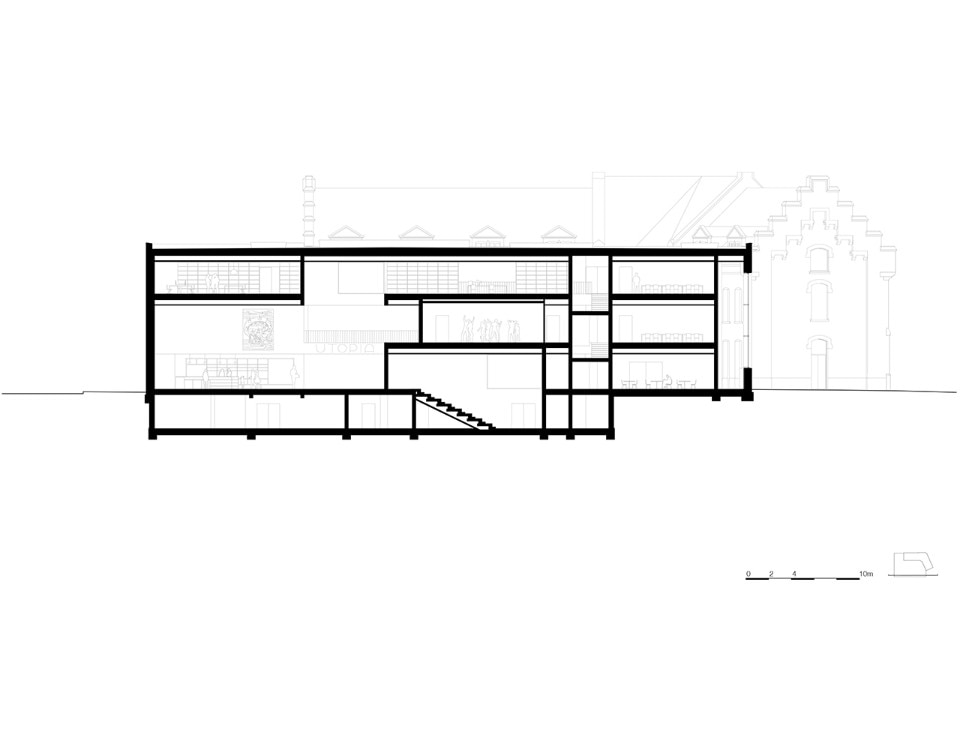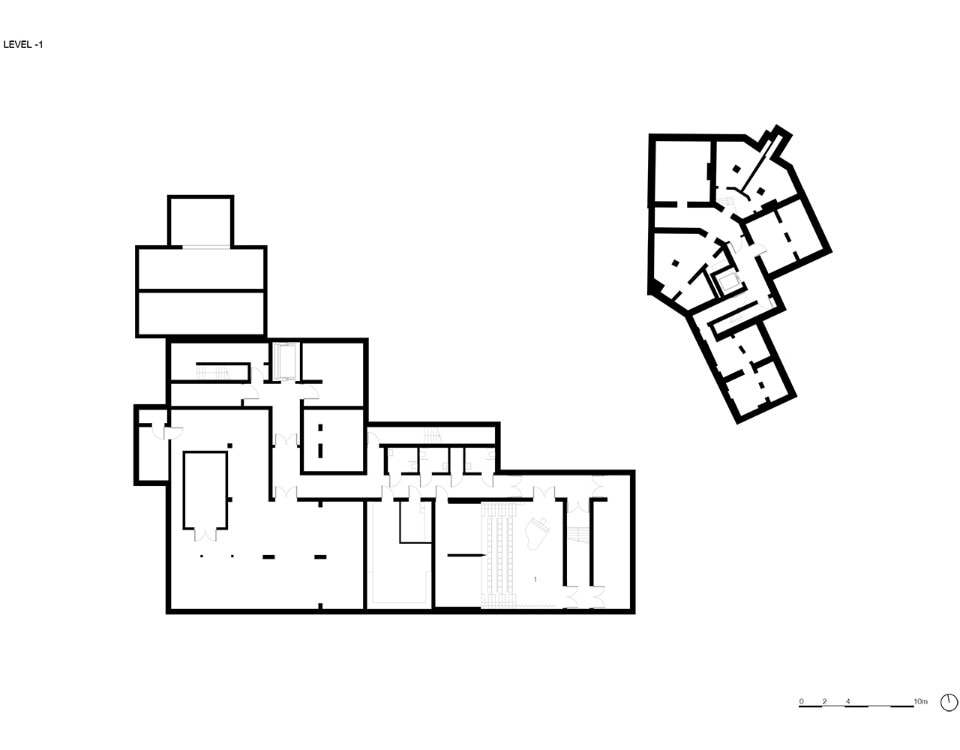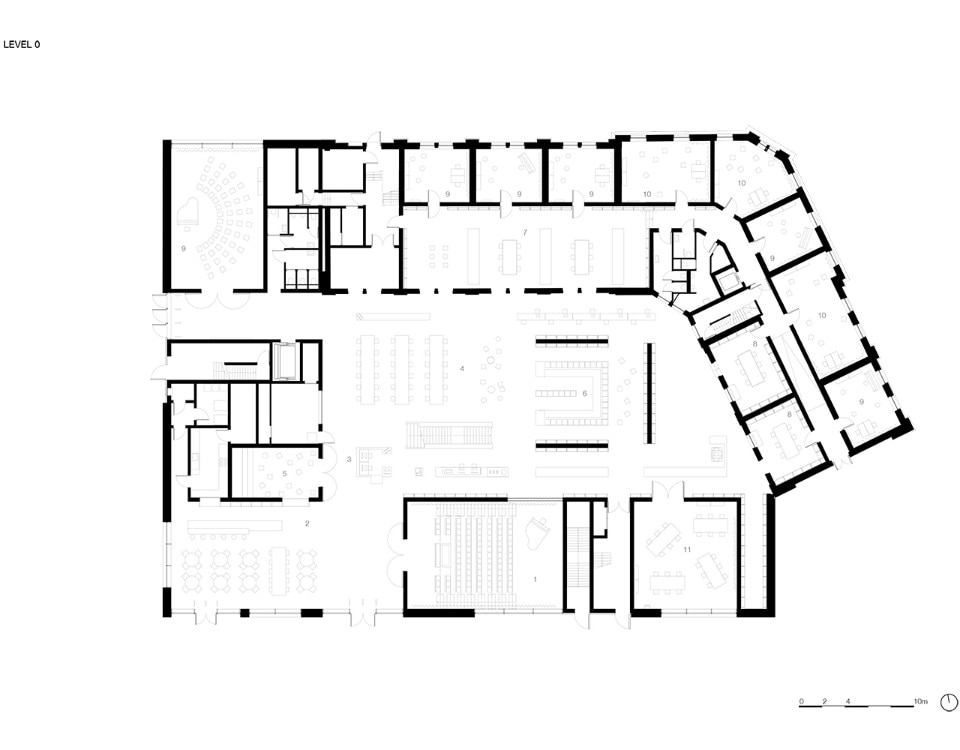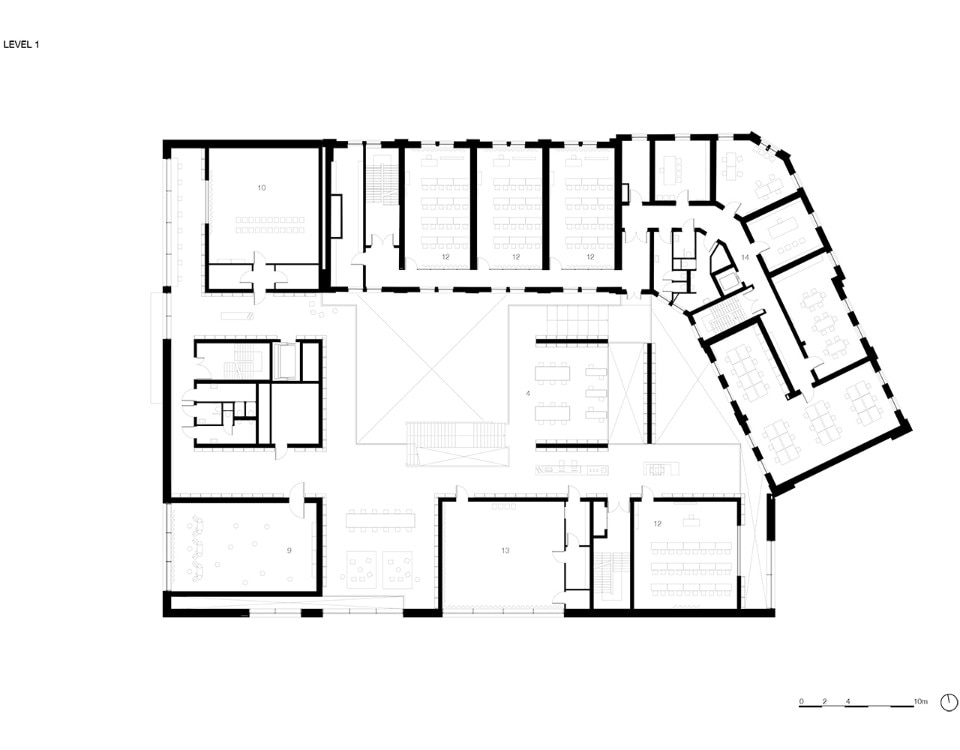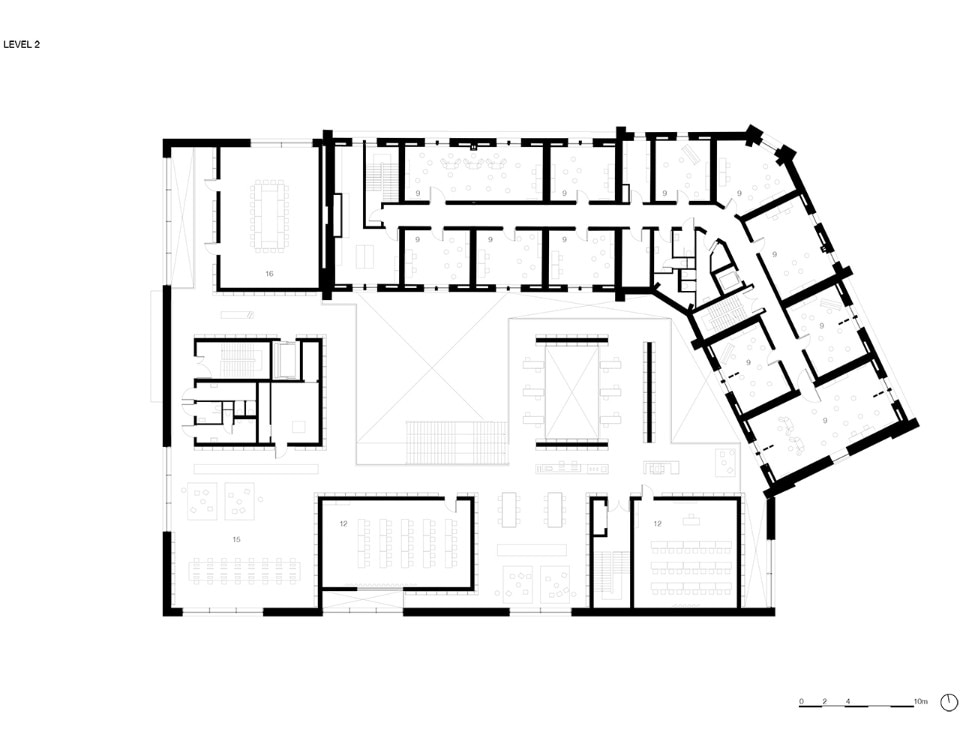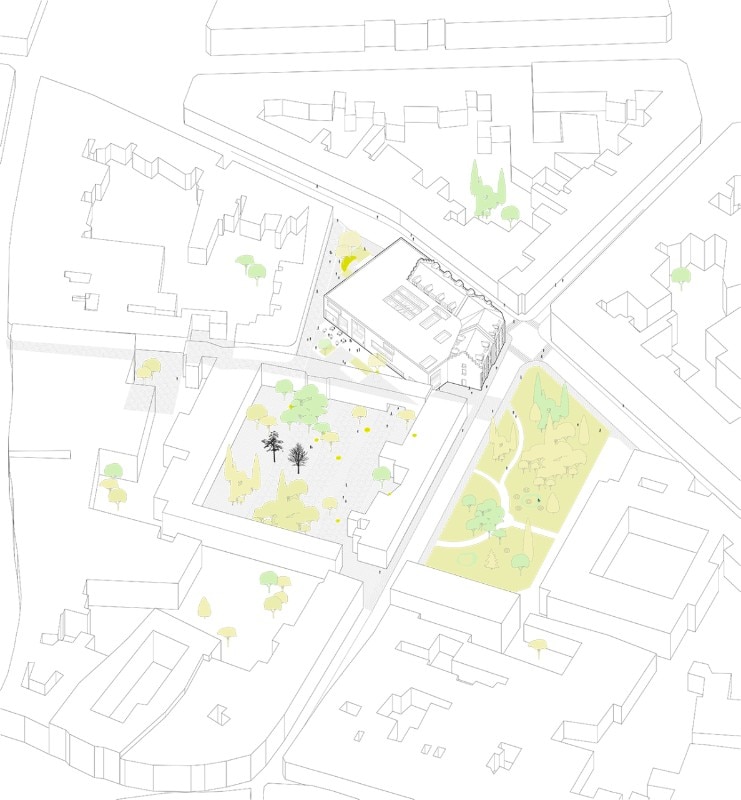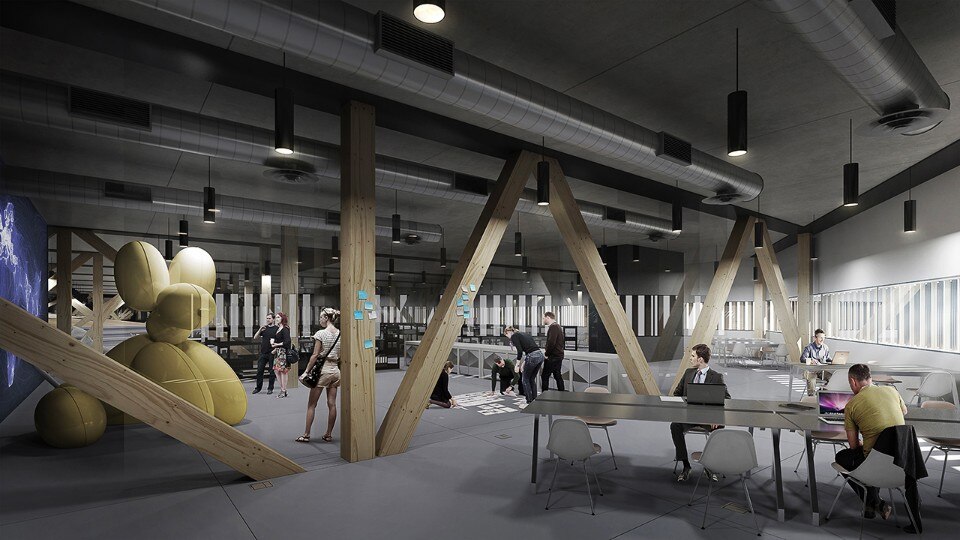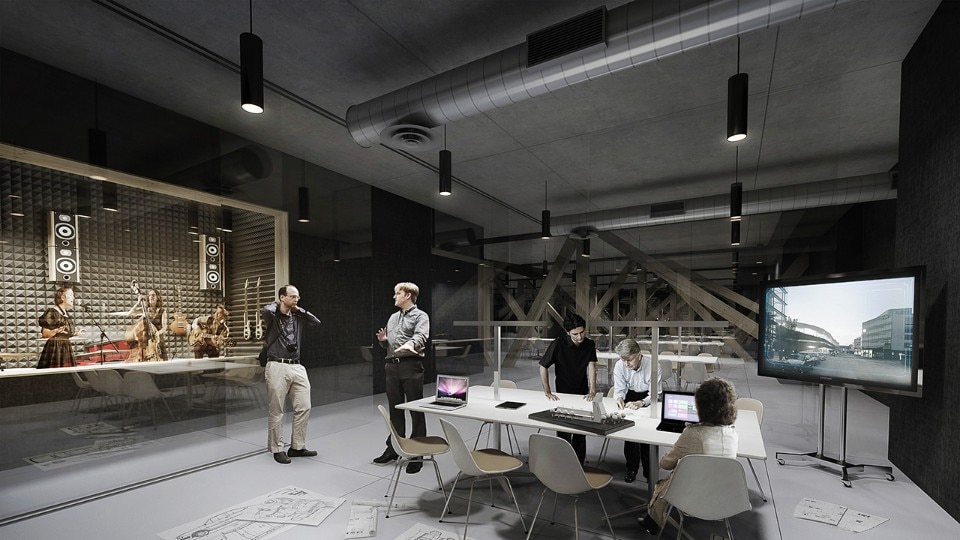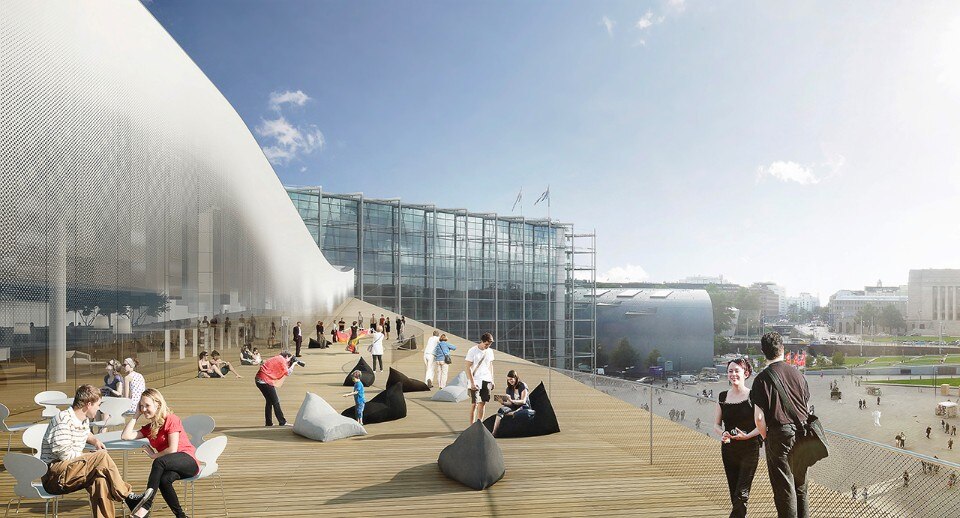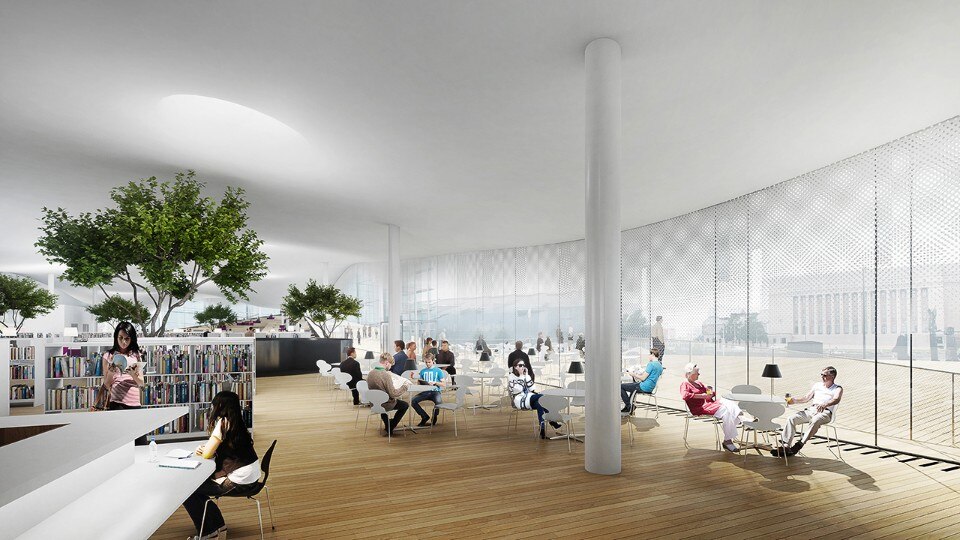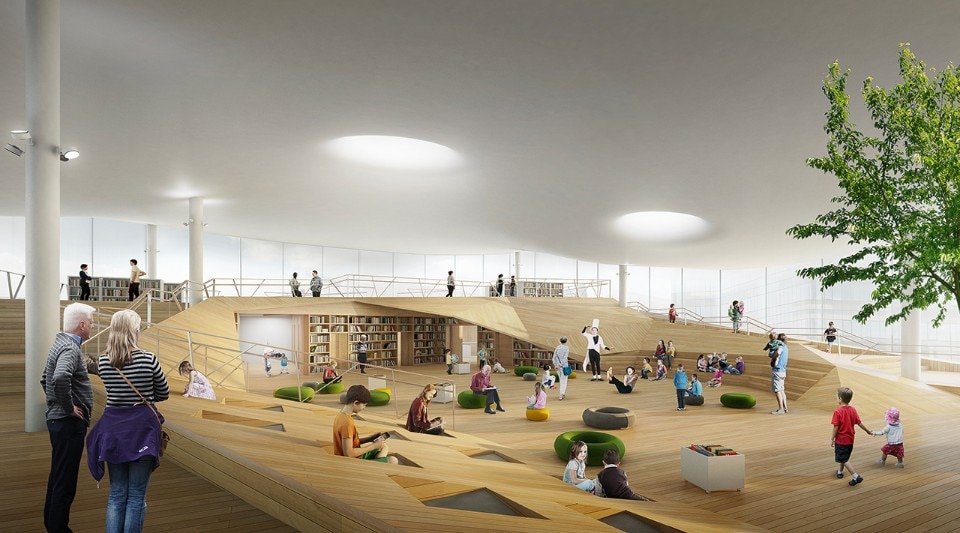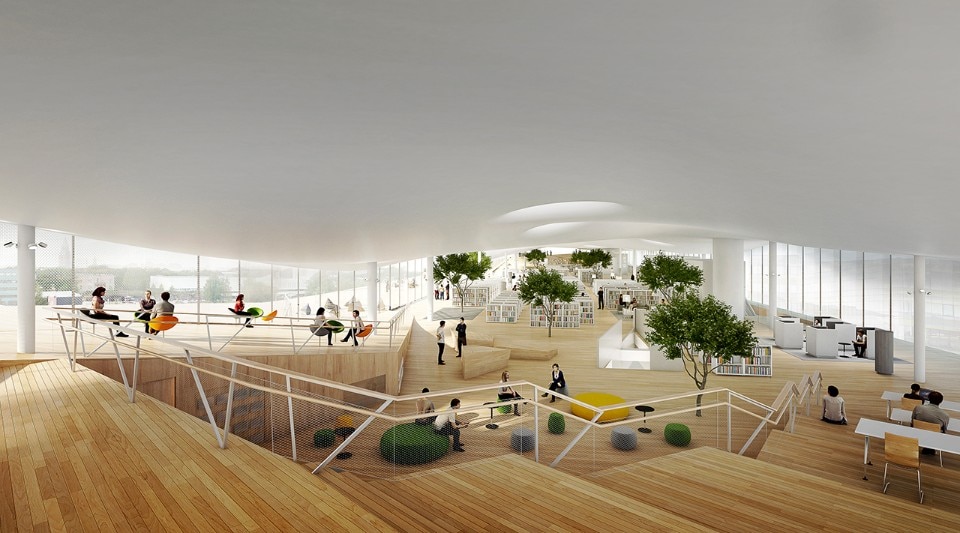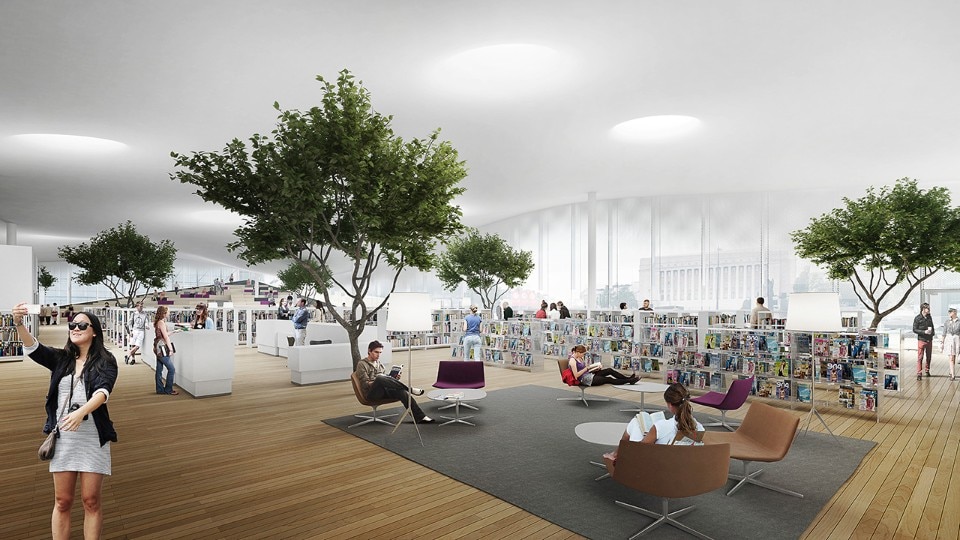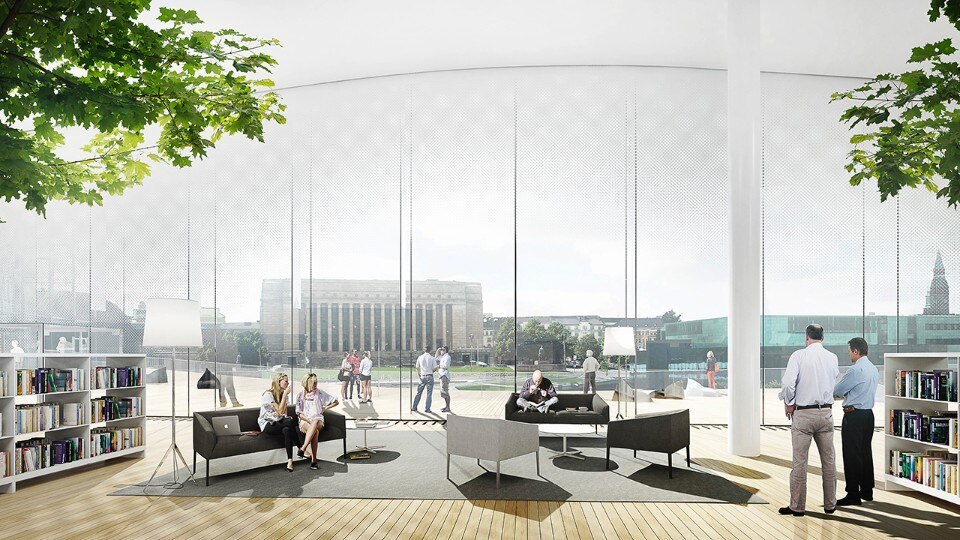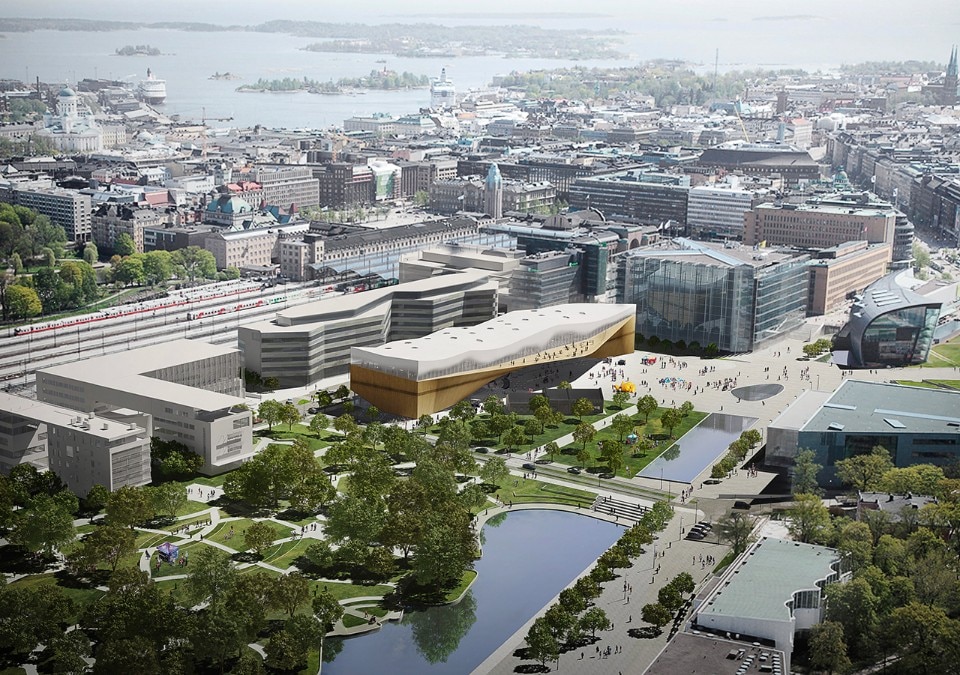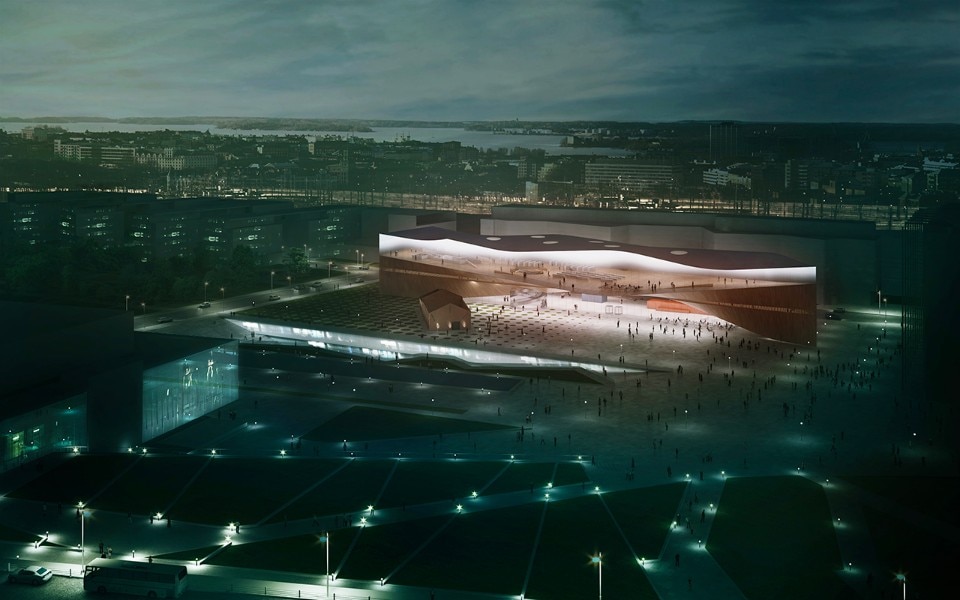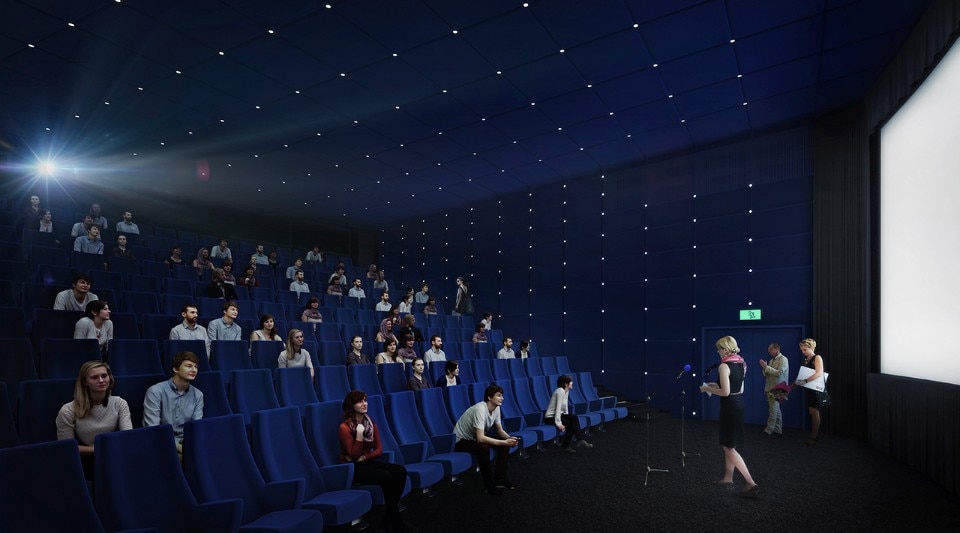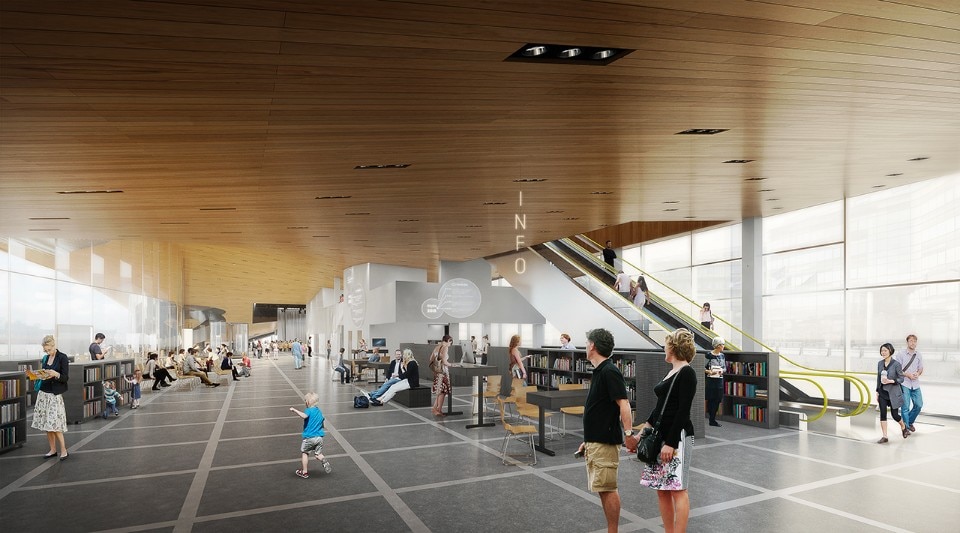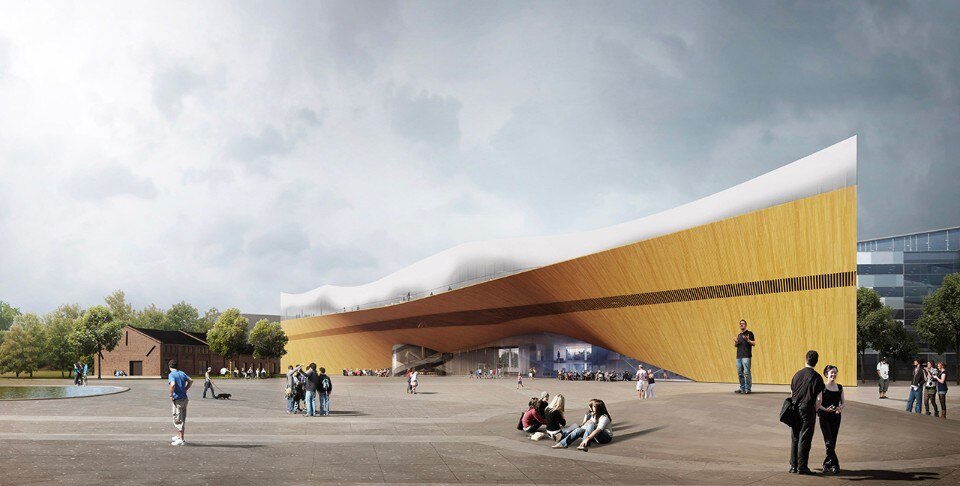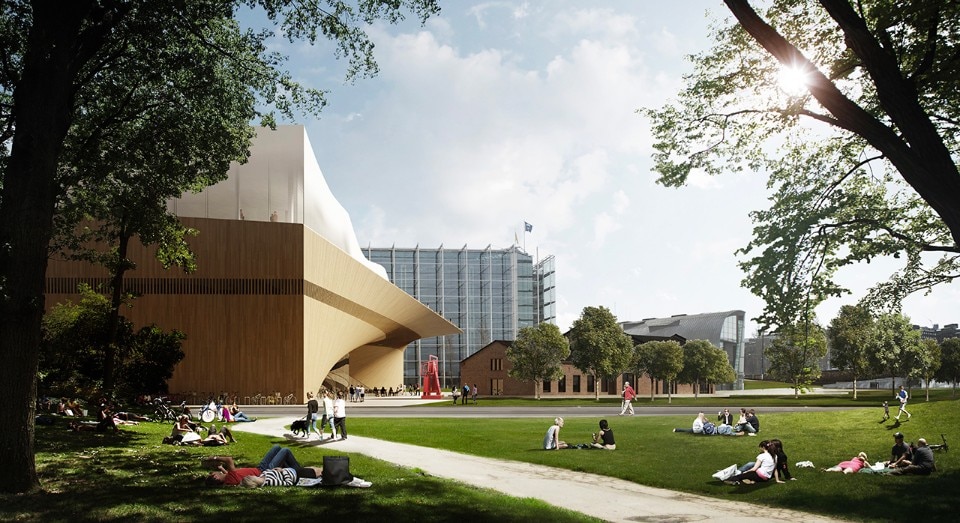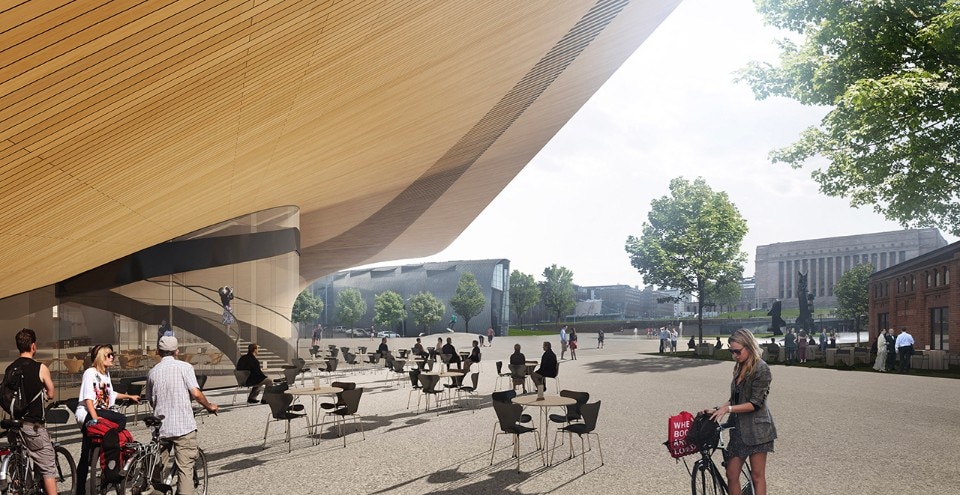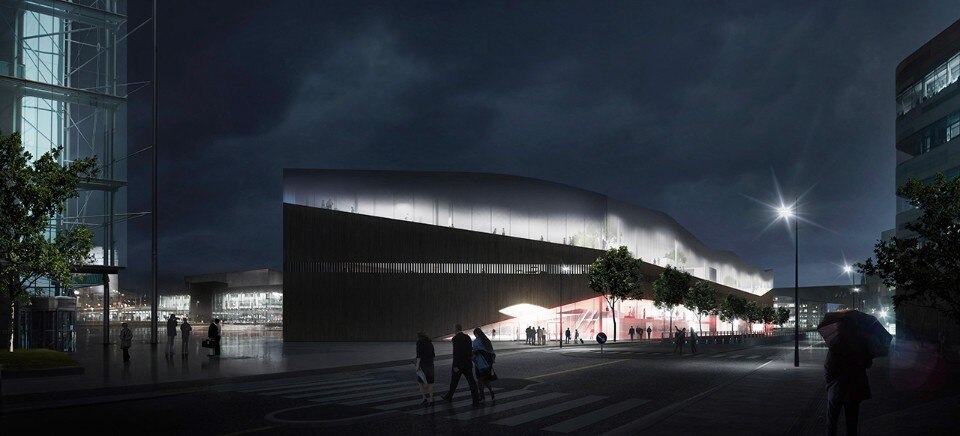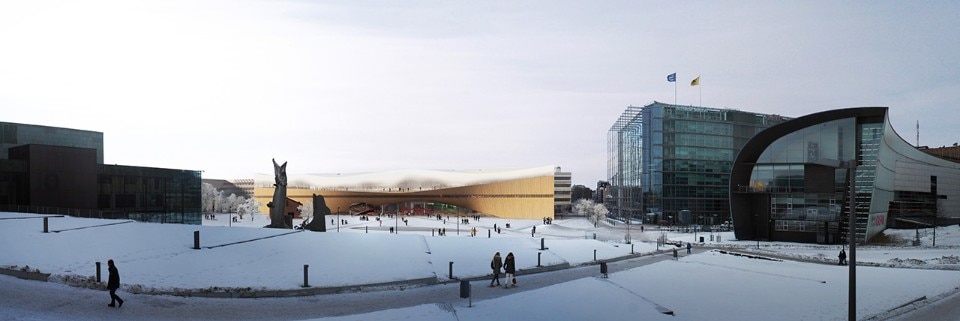Just how hard it is to create a public building, especially a library, and how diverse architects' points of view are on the subject, is clear. You can tell from looking at the pictures of libraries here. In consideration of its publicness, which is more important: Its aura, uniqueness, the spectacle that the building offers its users and the city? Or how it represents being a place for everyone, regardless of race, age or income? The former is a monument-library. The latter is a place-library.
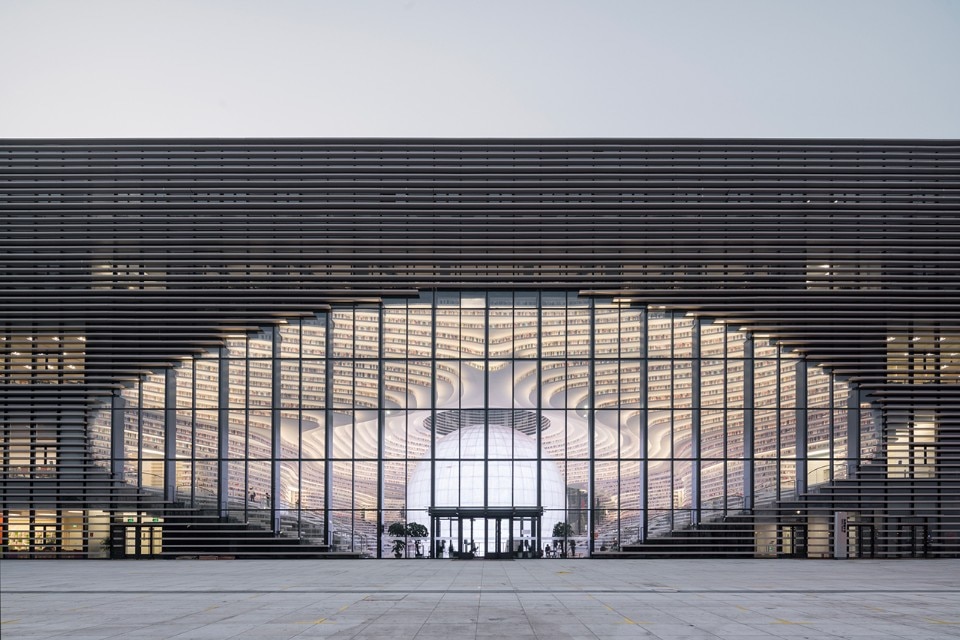
 View gallery
View gallery
Let us also ask ourselves what role the presence of books plays in our public and private lives today. So many friends' houses are completely bare, without paper. Bookstores have disappeared, almost completely and almost everywhere (to my great disappointment). The search for titles and topics that might interest us takes place almost exclusively online.
Libraries and universities are the only places left where it is possible to see, touch and browse books. Especially young people perceive books as the residue of a form of knowledge on its way to extinction: inefficient, expensive and cumbersome. Because of this, even when libraries are very modern and technological, they are likely to come across as outdated, ancient buildings. They are what still remains of a world that is no longer considered up to date.
Libraries and universities are the only places left where it is possible to see, touch and browse books. Especially young people perceive books as the residue of a form of knowledge on its way to extinction: inefficient, expensive and cumbersome.
As for the architects who in recent years have had the good fortune to design and build libraries, on the one hand they emphasise classical spatiality, perhaps unknowingly equating them with temples, theatres, railway stations and industrial warehouses. On the other, the architects make the most of the magnetic beauty of the books themselves. Kilometres and kilometres of shelving full of fragile sheets of paper bound together, nicely lined up to form virtual stage sets showing the vastity and heterogeneity of human knowledge; decorative patterns full of different colours and sizes.
The contrast that emanates from the greatness of the spaces compared to the smallness of the books has an irresistible allure. Many architects, we might say, were inspired by the monumental, high-resolution photographs of Andreas Gursky and Candida Höfer. Libraries stimulate the dreamlike, sensual imagination of architects much more than they did 20 years ago. The fanciful baroque monument-library conceived by MVRDV in Tianjin, China alludes to the themes of vertigo and infinity. Contrariwise, the urban, rational library built by Kaan in Aalst, Belgium makes the ideas of order and archives come to the fore.
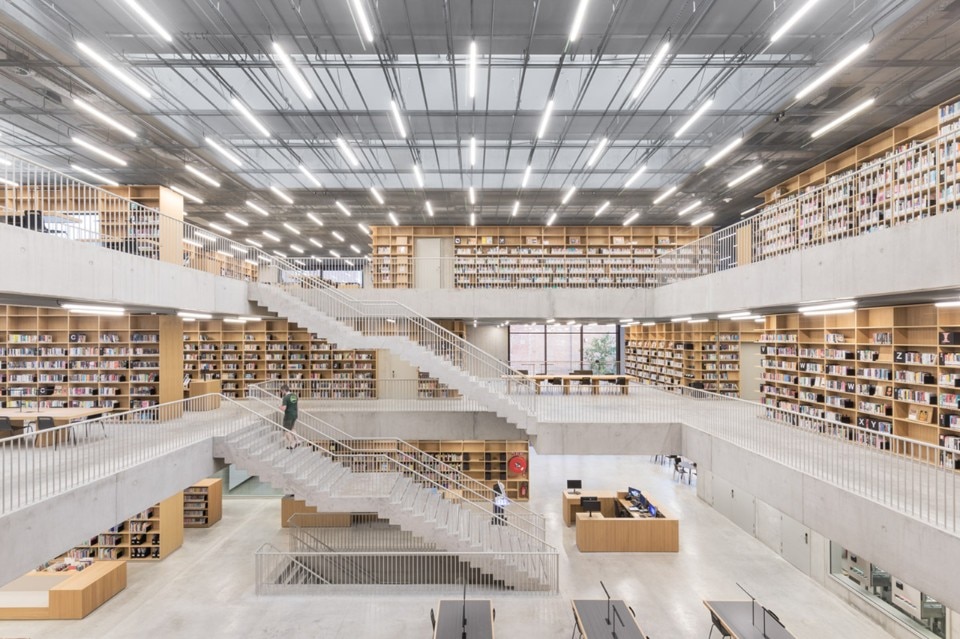
 View gallery
View gallery
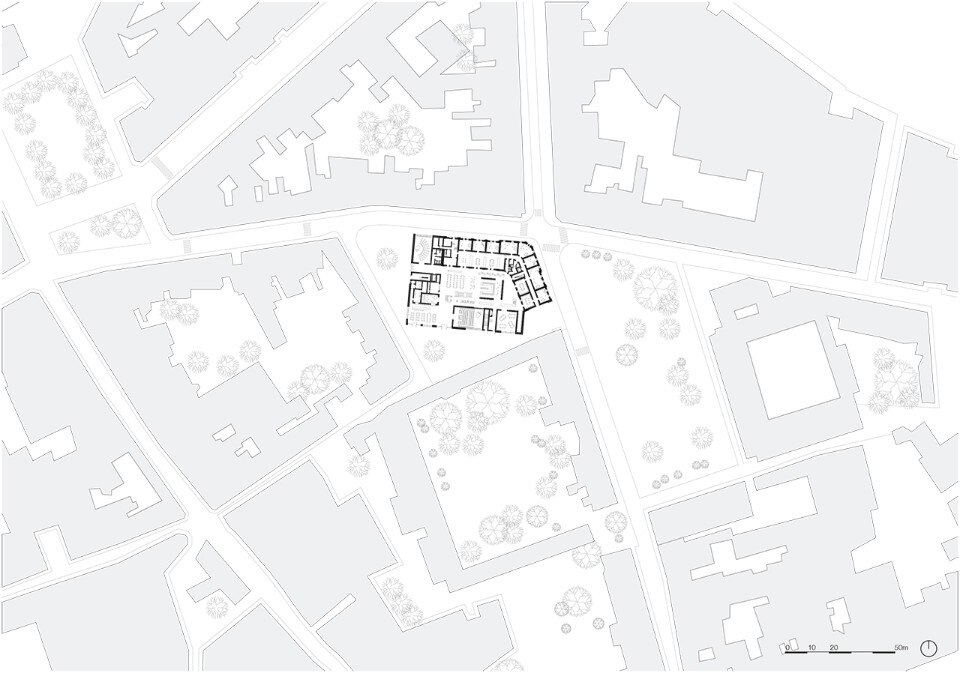
L:\Archive Projects\625_Pupillensite, Aalst BE\04_drawings\03_2D\_production\siteplan\K625_siteplan A4 (1)
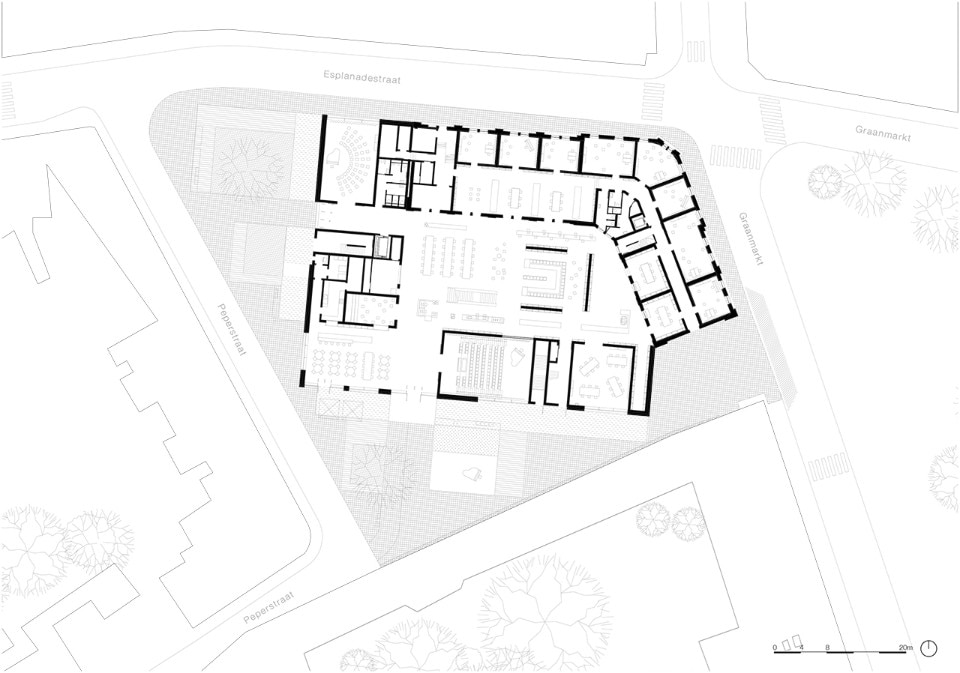
K625_siteplan A4 zoomed_8pt
There is a lot of programmatic vagueness about what is, or should be, the heart and soul of a public library building today. Instead of books, there are servers. The same programmatic indeterminacy afflicts, among other things, public museums and public parks. Many libraries aspire to become generalist places where people can go to do stuff, where the common denominator is the intelligent use of free time. Reading, watching and listening are three forms of learning typical of a contemporary library, and it would seem that each of these is better than studying.
Many large libraries emulate natural landscapes: few walls, much functional flexibility, plenty of windows and very advanced acoustics.
The interior of the new Helsinki library due to open soon (building by Ala Architects and engineering by Arup) is full of large open-plan spaces, huge lounges where there is comfort, peace and quiet. They are surrounded by a multitude of sinuous curves reminding us of the elegant corporate designs by the Finnish-American architect Eero Saarinen.
This is a place-library and a lounge-library. On the ground floor, there is a movie theatre, a multifunctional space and a restaurant. On the intermediate floor, there are study rooms, a multimedia library, saunas, workshops and a "living lab". On the top floor, among bookshelves everywhere, there’s a children's area, a cafe, various silence zones, an oasis and many balconies. The longitudinal shape in section is reminiscent of a latter-day version of the Staatsbibliothek zu Berlin by Hans Scharoun; it is organic, cascading, democratic and informal. The facades, on the other hand, contain the iconography of a ship's hull.
Many large libraries emulate natural landscapes: few walls, much functional flexibility, plenty of windows and very advanced acoustics. The greatest libraries (including what was to have been the European Library of Information and Culture in Milan, designed by Bolles + Wilson) are monuments of the modern age, but do not have the mediagenic power of stadiums, museums, airports and skyscrapers because they are experienced as purely utilitarian places. In Europe and the United States of America, libraries are mainly tasked with translating into a physical form the prevailing ideas of a politically correct society and knowledge that aims to be open and accessible to all, without hierarchies or divisions: democratic and anti-dogmatic.
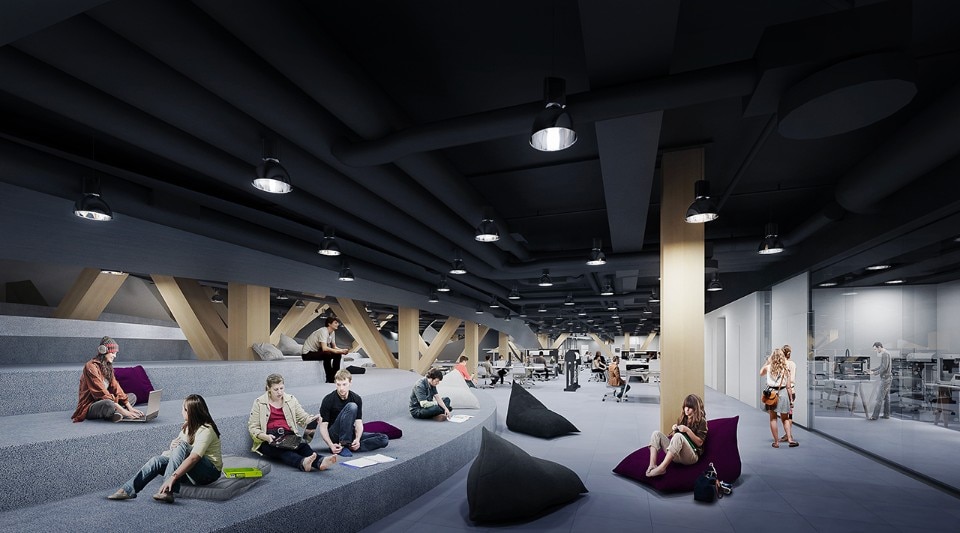
 View gallery
View gallery
But the small libraries – the ones located in the suburbs, in local neighbourhoods, in hotels, associations, schools and museums – are the ones best able to represent the idea of the truly democratic sharing of knowledge. Architecturally, small libraries can not compete with the grandeur of the great institutions located in the capitals, but socially they can be at least as effective.
They are places for meetings and activities. They are frequented by rich and poor, children and the elderly, the cultured and the ignorant, those who can only write by hand and those who are no longer able to do so. But even here, in the myriad of small libraries scattered throughout the land, the heart and soul no longer seem to be paper books. A few years ago, I brought a bunch of old books (excellent titles, I might add) as a gift to a library in the suburbs of Milan. I was asked to please not leave them, as they didn’t really know what to do with them.
At the current Architecture Biennale in Venice, the Finnish pavilion is hosting a small exhibition about libraries. The introduction suggests the aims a library in the age of digitalisation should pose itself: "The public library was originally perceived as the symbol of progressive societal aspirations. Today it takes the form of the non-commercial common ground for intellectual and creative freedom. It is a free space for learning, doing and sharing. The public library of the 21st century is a ‘popular monument’: a non-commercial public space which is open for everyone, free for everyone, belonging to everyone and used for everyone’s benefit." The fact that we need to conceive a popular monument called the Library seems to me a truly fascinating challenge. The same challenge – the attempt to neutralise the comparison between high culture and popular culture – was tackled 40 years ago by the Centre Pompidou in Paris, and the question is obviously still open.


